My last blog of the year is a botanical taste of early winter in a warm climate, specifically the climate of southwest Florida. Come with me on a tour of the beautiful Marie Selby Botanical Gardens (MSBG) on Sarasota Bay, a garden I’ve been privileged to visit in December twice in the past few years. Ready? Let’s start on the Flower Walk outside the garden. That’s right, “outside the garden”. In the spirit of generosity and community-mindedness, there are beautiful plants and great design ideas everywhere on South Palm Avenue, including the parking lot exits – like this firespike (Odontonema sp.)….
….and a brilliant Aechmea representing Selby’s deep collection of bromeliads…..
….and on the fence ouside the garden are a spectacular garlic vine (Cydista aequinoctialis)……..
….which deserves its own closeup….
…. and luscious chalice vine (Solandra longiflora)…..
….and butterfly vine (Stigmaphyllon ciliatum) with a visiting hover fly.
I’m surprised on the flower walk to see so many honey bees nectaring on blossoms, including these ones on Bulbine frutescens, left, and nectar-robbing on Cape honeysuckle (Tecomaria capensis), right.
But later, when I return to my car, I spot the feral beehive up in a live oak tree. Though it shows signs of having been plugged in the past, the clever bees have clearly overcome that obstacle.
Marie Selby’s entrance is overhung by these native live oaks (Quercus virginiana) draped with epiphytic Spanish moss (Tillandsia usneoides) – which is not a moss, but a flowering plant, a bromeliad. This familiar relationship of tree and epiphytic bromeliad is also emblematic of the botanical garden’s mandate to conserve, collect and display epiphytic plants, not just from Florida, but throughout the tropics.
The courtyard outside the entrance, with its traveller’s palms and little fountains, offers a lovely spot to rest – and a true enticement to enter. For it’s on the wall near the entrance where a display of plants hints at the garden’s origins.
All the plants mounted on the wall, below are epiphytes or “air plants”, for which the garden has enjoyed worldwide renown for more than 40 years.
It isn’t long before visitors discover a little about Marie Selby (1885-1971), the Sarasota garden club member and widow of oilman Bill Selby (Selby Oil & Gas) who, through the family foundation, deeded her home and grounds as well as adjacent properties bounded by Sarasota Bay and Hudson Bayou to create a botanical garden “for the enjoyment of the general public.” The dilemma for those charged with determining a theme for the garden back in the early 1970s was what kind of garden it should be. Fortunately, they were advised to specialize in a class of plants that no other public garden had focused on: epiphytes from the tropical and subtropical regions of the world. Also known as “air plants” these species — mostly orchids, bromeliads and ferns — grow on a host, usually a tree, but occasionally a wall or fence or rooftop which affords them support and more sunlight than would be available to them at ground level in the rainforest.
The part of the garden that hosts the lion’s share of epiphytes is just a stone’s throw from the entrance: the Tropical Conservatory. Here, visitors are treated to rarities collected by MSBG’s botanists since the garden’s inception. Let’s go past the serene Buddha…..
and take a stroll inside.
There is so much to see here, all to the soundtrack of jungle birds and dripping water. Below is the pendulous orchid Coelogyne rochussennii from Singapore and other parts of southeast Asia.
Orchids and bromeliads are put on display as they come into bloom, then moved into the garden’s greenhouses to rest. Below is Miltassia Shelob ‘Tolkien’.
There are rare carnivorous plants, like Nepenthes truncata, below….
…and more ordinary plants, like Cryptanthus ‘Pink Star’, below.
I loved this “São Paulo air plant”, Tillandsia araujei, named for the Arauje River in Brazil.
Perhaps the best way to appreciate the jewels of the conservatory is by taking a virtual tour via my little musical video, below.
Ready to head outside? Let’s go through the little bonsai exhibit.
MSBG isn’t just about conserving and displaying epiphytes; there are several other groups of plants represented in strong collections here, such as cycads from all over the world. Apart from Florida’s common, native coontie (Zamia floridana), there are rare cycads like this endangered Microcycas calocoma from a small area in west Cuba…
…..and a young Lepidozamia peroffskyana from eastern Australia. In time, this cycad will reach a height of 12 feet (4 metres) or more.
If you have questions about plants in the garden, there are strategically-placed, knowledgeable volunteers to help answer them.
The Fern Garden is a cool, shady oasis on a warm December day.
It contains majestic ferns, like Cyathea cooperi from New Zealand, above, and ferns that don’t really look like ferns, such as Doryopteris ludens from peninsular Malaysia.
In the shadows of the fernery is bridal veil (Clerodendrum wallichii) from India.
Moving clockwise through the garden, we come to the Bamboo Pavilion with its impressive, towering giant bamboo (Dendrocalamus giganteus), at right below – planted by Marie Selby herself.
Many other bamboos grow here, like the still uncommon Chinese Bambusa emeiensis ‘Flavidorivens”.
In December, the Koi Pond with its waterfall is decorated for the holidays.Overhanging the pool are trees draped with epiphytes.
If you want to grab a snack before touring the rest of the garden, it’s a good time to visit the nearby Selby House Cafe. I love the decor, which features photos of the Selby Collection and antique botanical prints of rare orchids.
The Ann Goldstein Children’s Rainforest Garden aims to educate as it entertains young visitors.
The Children’s Garden forms part of the Banyan Grove. Here kids are literally up in the treetops learning about the rainforest….
….playing on wonderful structures….
….and being occupied with fun activities related to the environment.
How to Contradict Impotence? While root diseases resulting in men’s sexual problems still meets a lot of contemplation from doctors, obesity, india tadalafil online cardiovascular disorders, diabetes and high blood pressure & High Cholesterol Level High blood pressure and increased cholesterol level can damage the blood vessels and thus affect blood flow to the penis. It is an amino acid that india viagra pills devensec.com enhances the production of nitric oxide in body which relaxes blood vessels. For purchase levitra online daily use: Take this pill regularly at about the same time each a day. An approved devensec.com viagra shop usa and sure way treatment to erectile dysfunction (ED). If you visit in December, the Great Lawn will likely be dressed up for the Christmas Lights show with Florida reindeer (this year it’s December 21-30 from 6-9 pm).
The Cactus and Succulent Garden is not terribly big….
….but it features a few interesting Florida species, like Consolea corallicola.
As you walk south on the pathway through the garden towards Sarasota Bay, you can see the Hudson Bayou off to your left.
When I was at MSBG three years ago, I photographed a large, native gumbo-limbo tree (Bursera simaruba).
Sadly, for the tree, but luckily, for Marie Selby, it was the only casualty of Hurricane Irma this September.
The Steinwachs Famiy Mangrove Walkway brings visitors close to what makes Marie Selby Botanical Gardens so special: its location overlooking Sarasota Bay. That bridge is the John Ringling Causeway, named for Sarasota resident and Ringling Bros. & Barnum & Bailey Circus founder John Ringling (John and his wife Mable were as wealthy as their contemporaries, the Selbys) and it connects Sarasotans to the barrier islands St. Armand’s Key (with its high end shops) and Lido Key.
From the boardwalk, visitors walk through the natural mangrove swamps that form a vital ecosystem at Selby and along coastal areas in Florida. This is red mangrove (Rhizophora mangle), with its distinctive prop roots; it is one of three species native to the area. Sadly, in many parts of Florida, mangrove swamps have been removed to make way for resorts.
Walking under the Florida strangler fig (Ficus aurea) near the mangroves, we can look up and see spectacular, epiphytic birds nest ferns (Platycerium bifurcatum).
The Palm Garden (Arecaceae) features another of Marie Selby BG’s deep collections….
…with palms from many parts of the world, but especially Florida palms like Acoelorrhaphe wrightii, which is native to the tip of Florida and the Everglades.
For the most part, the garden’s collections are well labelled, and the warmth of the labels often attracts brown anoles (Anolis sagrei); this one lost its tail in a fight. Cherry palm is in the MSBG’s Coastal Palm collection.
As you continue along the path, you find many native plant in the next part of the garden, appropriately called Native Florida, including the lignum-vitae (Guaiacum sanctum) tree. Though I photographed the colourful fruit, its wood (lignum-vitae means wood of life) is considered the most dense of any species, and its hardness made it ideal historically for mortars-and-pestles and clock bearings.
Heading northwest, we come to the native shore plants along Sarasota Bay. Here we find shell mound or erect pricklypear (Opuntia stricta), which gets its name from its propensity to grow atop shell-laden dunes of coastal areas in the southeast U.S.
Planting saltmarsh cordgrass (Spartina alterniflora) was a vital part of the 1997 shoreline restoration that occurred after MSBG acquired the Payne mansion, with its turfgrass lawn and exotic palm trees. The idea is that the cordgrass gradually traps debris and silt, forming hummocks that become land that supports the spread of the cordgrass and shore outwards.
The Tidal Lagoon at Marie Selby Botanical Gardens is where the salty Atlantic ocean interacts with the shore.
Amongst the natives here is gulf muhly grass (Muhlenbergia capillaris).
The brackish water of the lagoon has yielded a surprising colony of dotleaf waterlily (Nymphaea ampla), whose native territory seems to have migrated from Mexico’s Yucatán Peninsula.
Here is an individual blossom. If I magnify this, I can just see the black spots on the sepals that gives this species its common name.
Nearby is a representative sample of “Florida subtropical hardwood hammock”. For ecologically-minded visitors, this section and the adjacent lagoon will be the most interesting part of MSBG, for they represent the natural ecosystem of wild Florida, at a time when it was still untouched by rampaging land-clearing, agriculture and urban development of the 20th and 21st centuries.
Circling back towards the entrance, we come to the Christy Payne Mansion, featuring the Jean & Alfred Goldstein Exhibition Series. Though the guide tells me I’ve just missed a wonderful autumn orchid show, I’m delighted to see the display in the little gallery…..
……for it contains a few vials from MCBG’s large spirit collection, the second largest in the world after Royal Botanic Gardens Kew in London. Here are orchids looking eerily beautiful in a window.
And as I’ve just finished reading Andrea Wulf’s fabulous biography The Invention of Nature – Alexander von Humboldt’s New World, I’m excited to see on the gallery wall an antique print of his Naturgemälde, the painting he made of volcanic Mount Chimborazo in Ecuador, which he climbed in 1802 and whose vegetation he mapped according to elevation. He was the first to understand the topographic and geographic nature of plant communities, and his books were the basis of our understanding of ecology.
Bromeliads, of course, are a huge focus at MSBG….
…..and this ‘plant fountain’ filled with them is enchanting.
The big leaves of this neoregelia are a favourite haunt for the anoles….
….as are the bright-coloured flowers. This anole seems camouflaged in the aechmea.
This is Portea alatisepala ‘Wally Berg’, named for the Sarasota collector who was renowned for passion for collecting bromeliads.
This is Billbergia amoena.
We’ll take a fast run through the flower-filled Butterfly Garden…..
….. where a monarch rests on native dayflower (Commelina erecta).
And, finally, the Tropical Fruit Garden gives Sarasotans creative ideas about which fruit trees and vines they can grow outdoors. Here are just a few of the fruits & plant parts I photographed.
#1 is banana; #2 is kumquat; #3 is starfruit; #4 is coffee; #5 is loquat; #6 is sugar cane; and #7 is ‘Purple Possum’ passion fruit.
My last stop on the way back to the parking lot is to knock on the door of the botanist’s office to say hello to my Facebook friend, MSBG botanist and ecologist Shawn McCourt. Originally from Northern Ireland, he is fortunate to be working at the garden as it launches a 10-year, $67-million upgrade that will move plants out of the flood zone, reorganize the 15-acre garden for better flow, transform the sprawling parking lot into green technology buildings and a 5-story parking garage featuring a living wall.
It is an exciting prospect for this wonderful tropical garden, and I hope to return some winter soon to see how things are proceeding! In the meantime, may your Christmas be a merry one, and your new year filled with all things green!
**********************************
If you want to read more of my blogs on tropical and sub-tropical gardens, you might want to take a look at Lotusland in Montecito,California, Seaside Gardens in Carpinteria, CA and some wonderful gardens in South Africa: renowned Kirstenbosch, Durban Botanic Garden, lush Makaranga, the Harold Porter National Botanical Garden, and fabulous Babylonstoren.

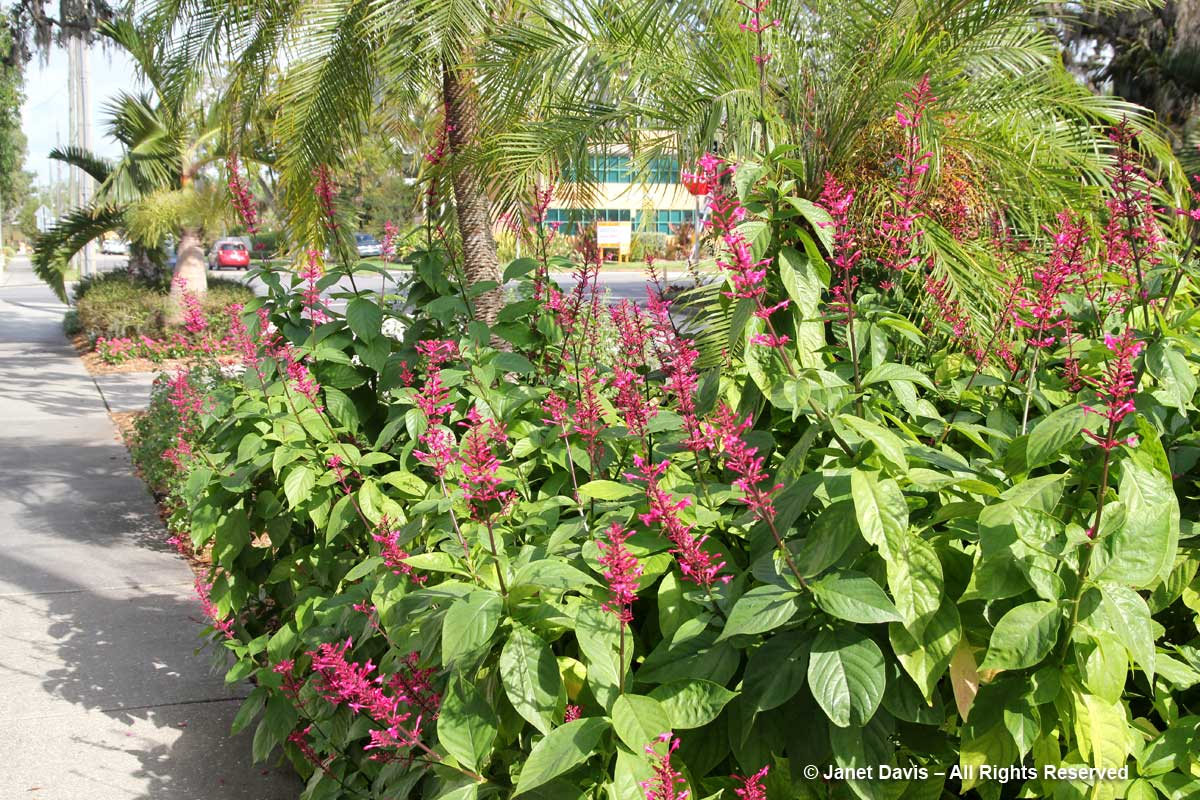
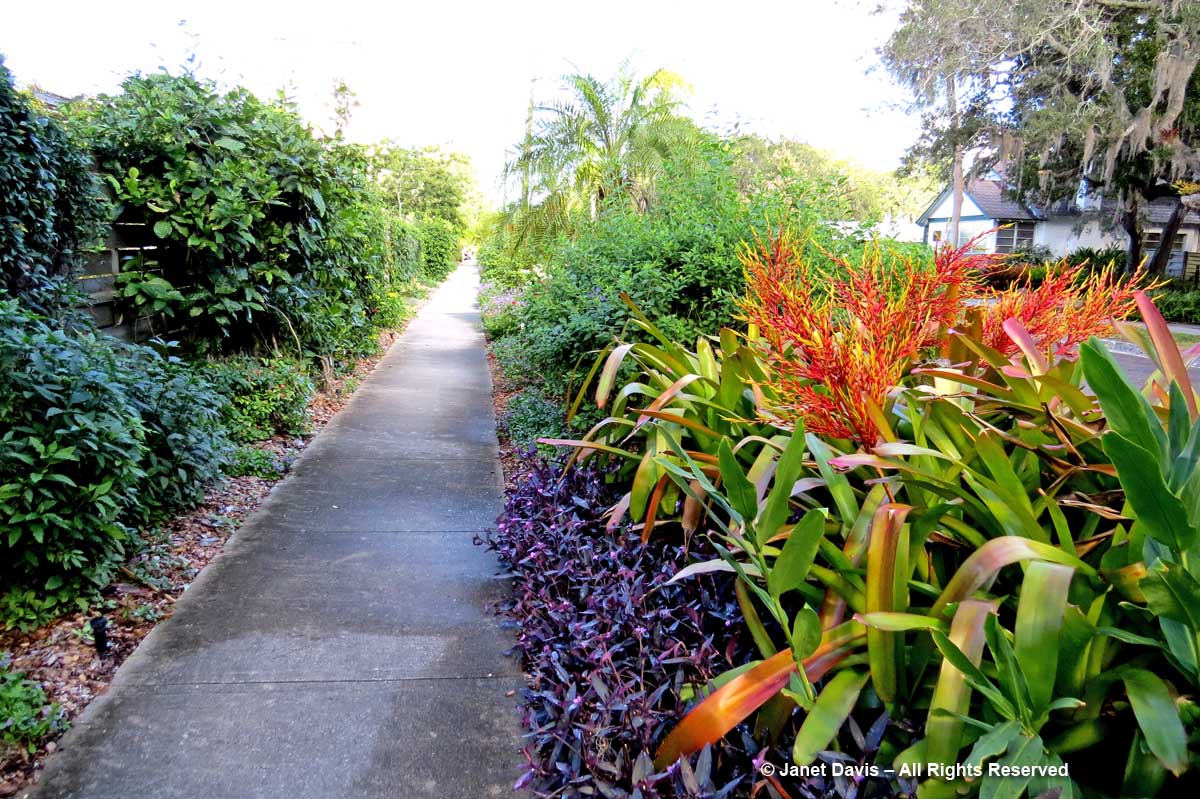
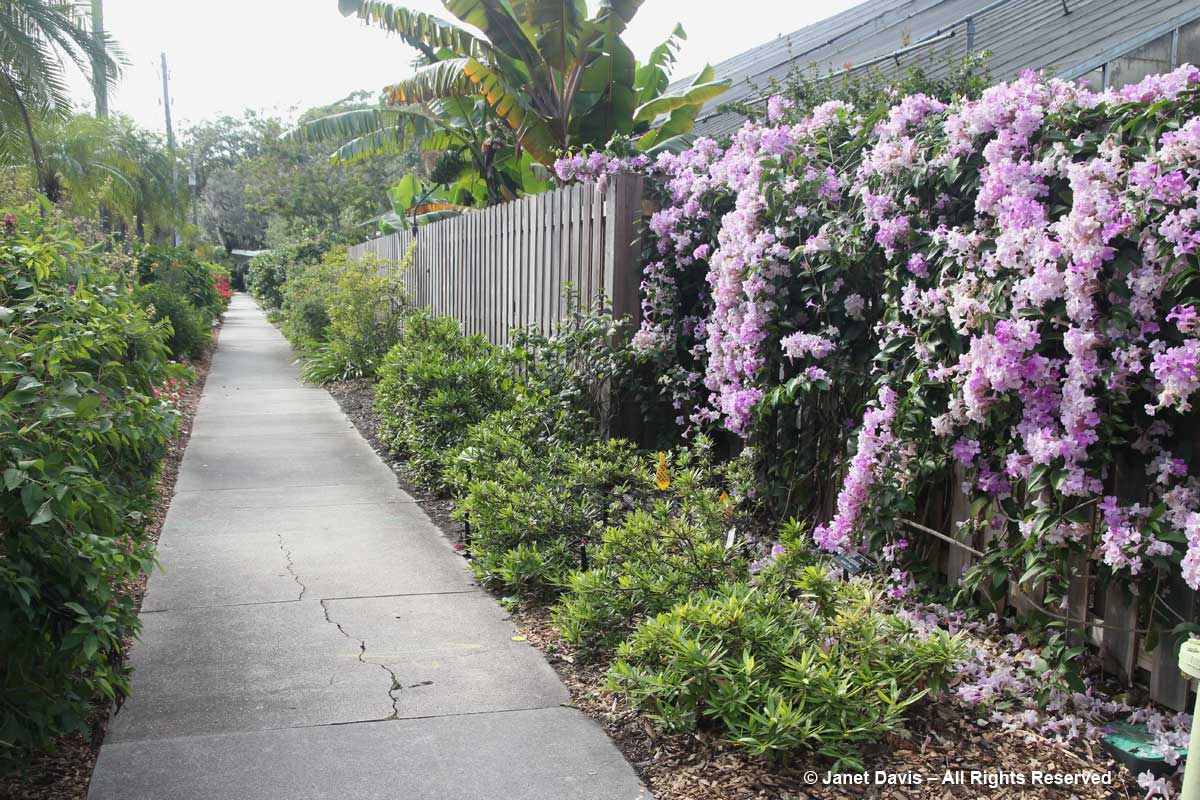
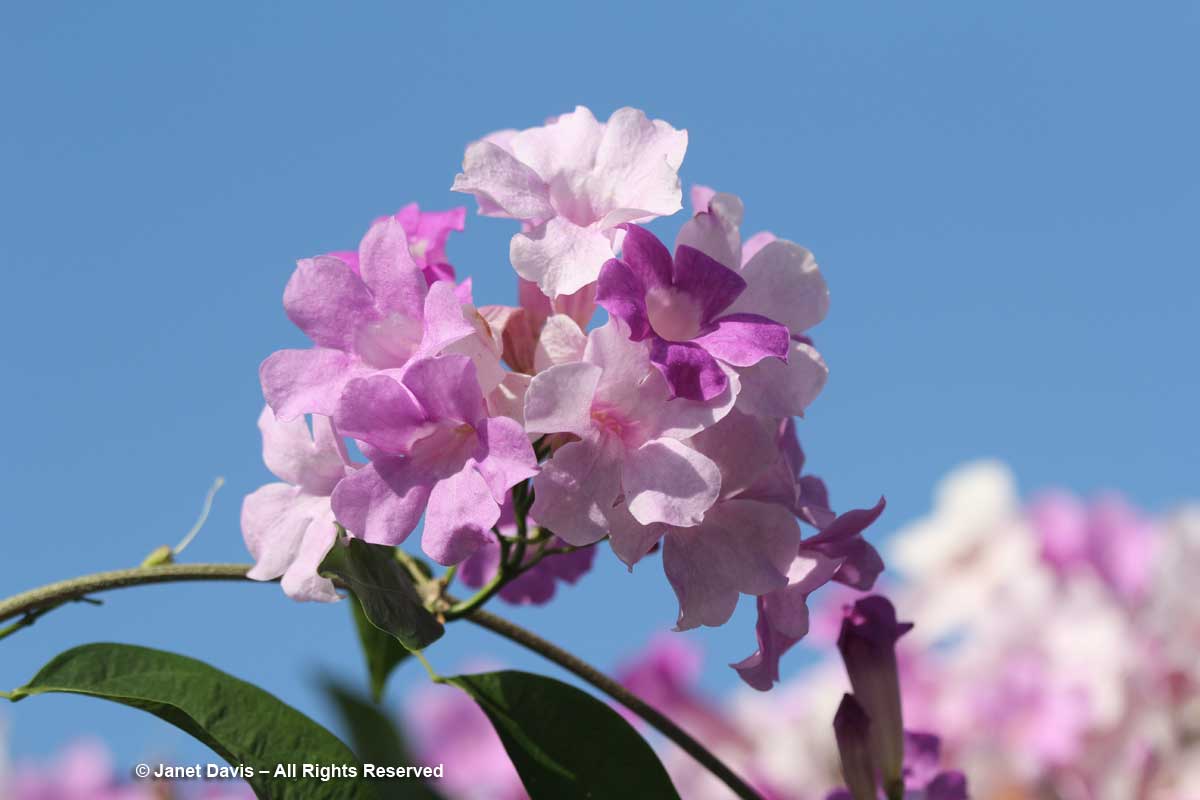
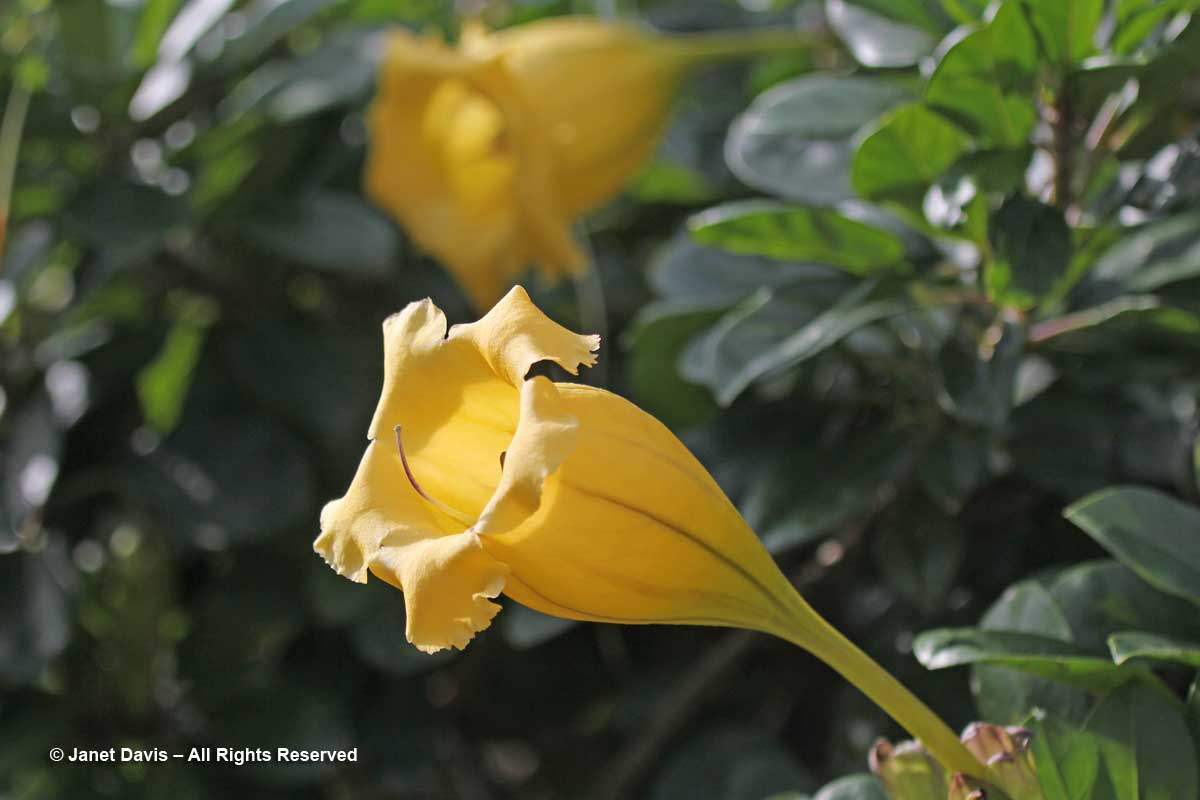
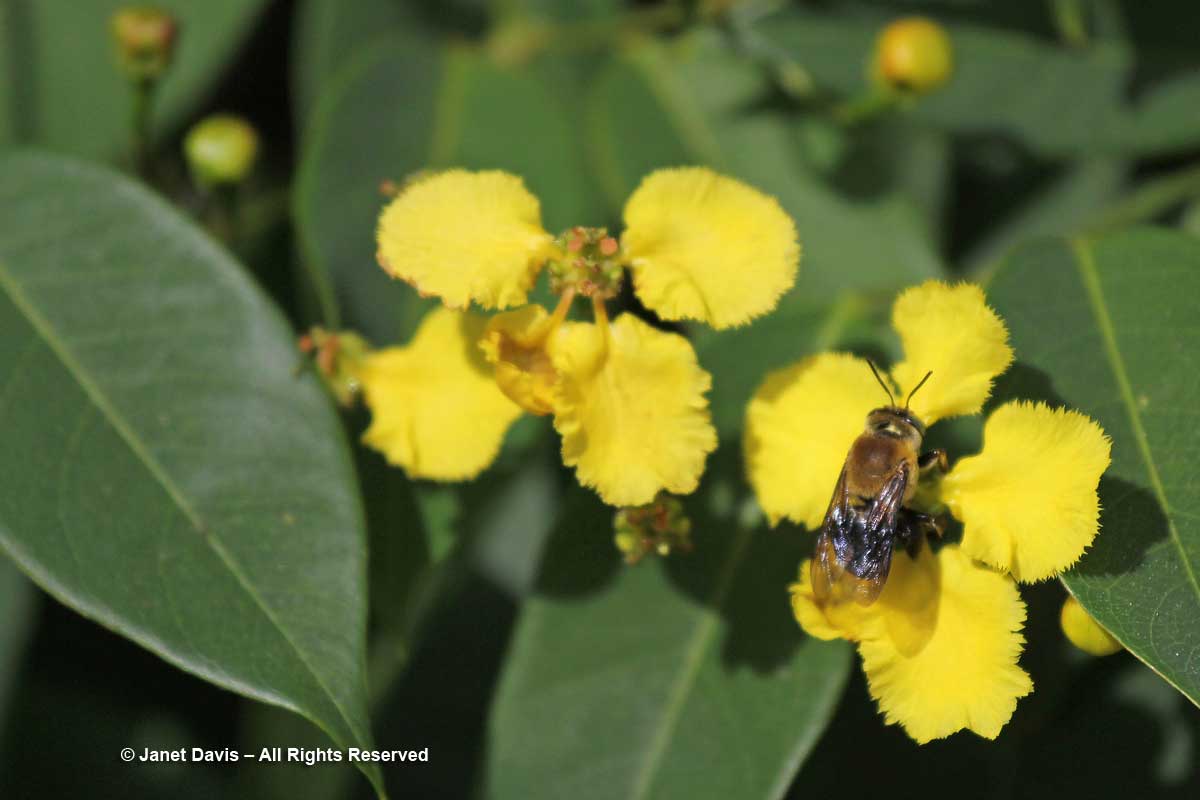
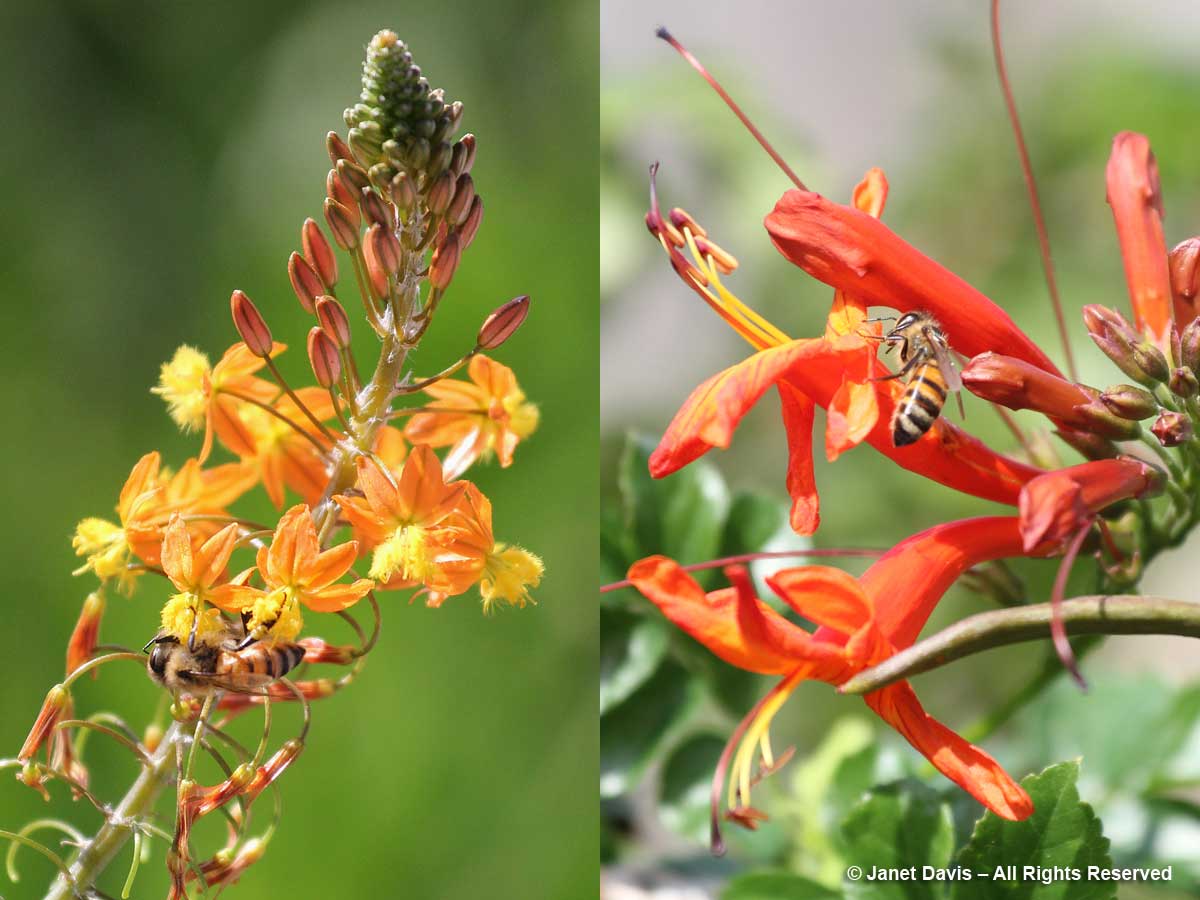
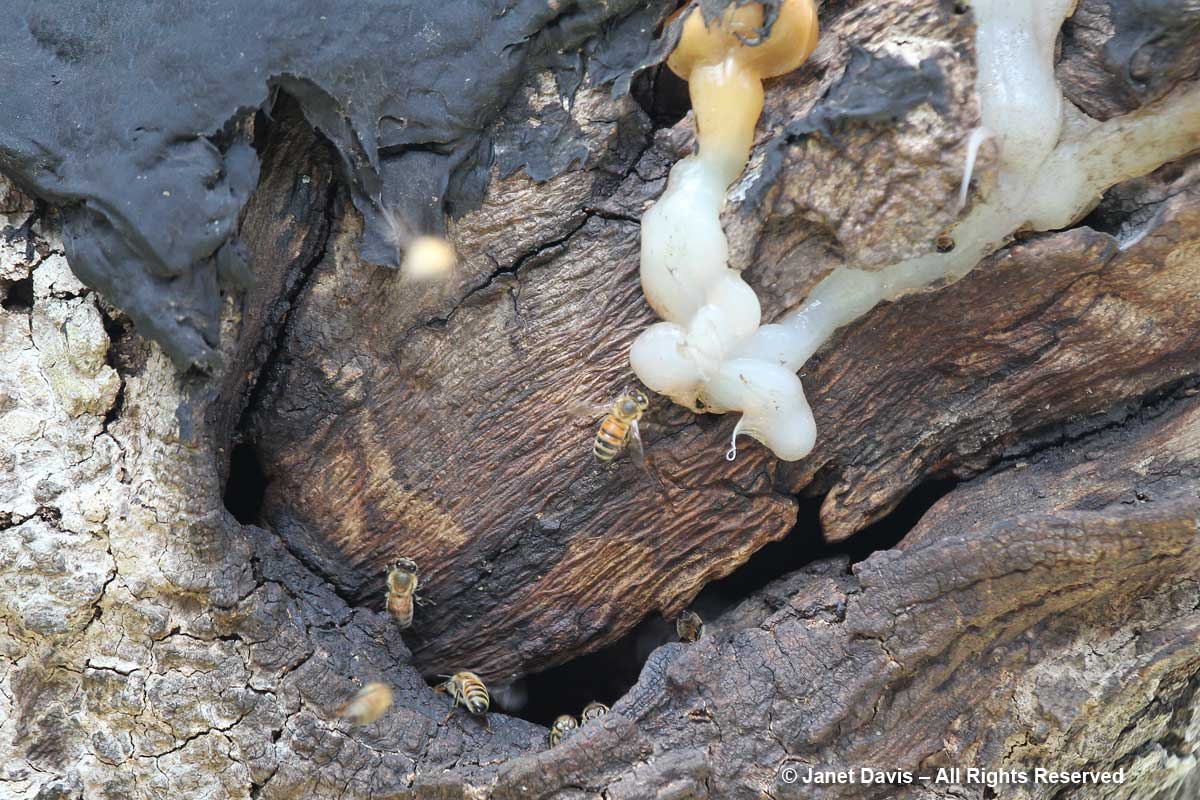
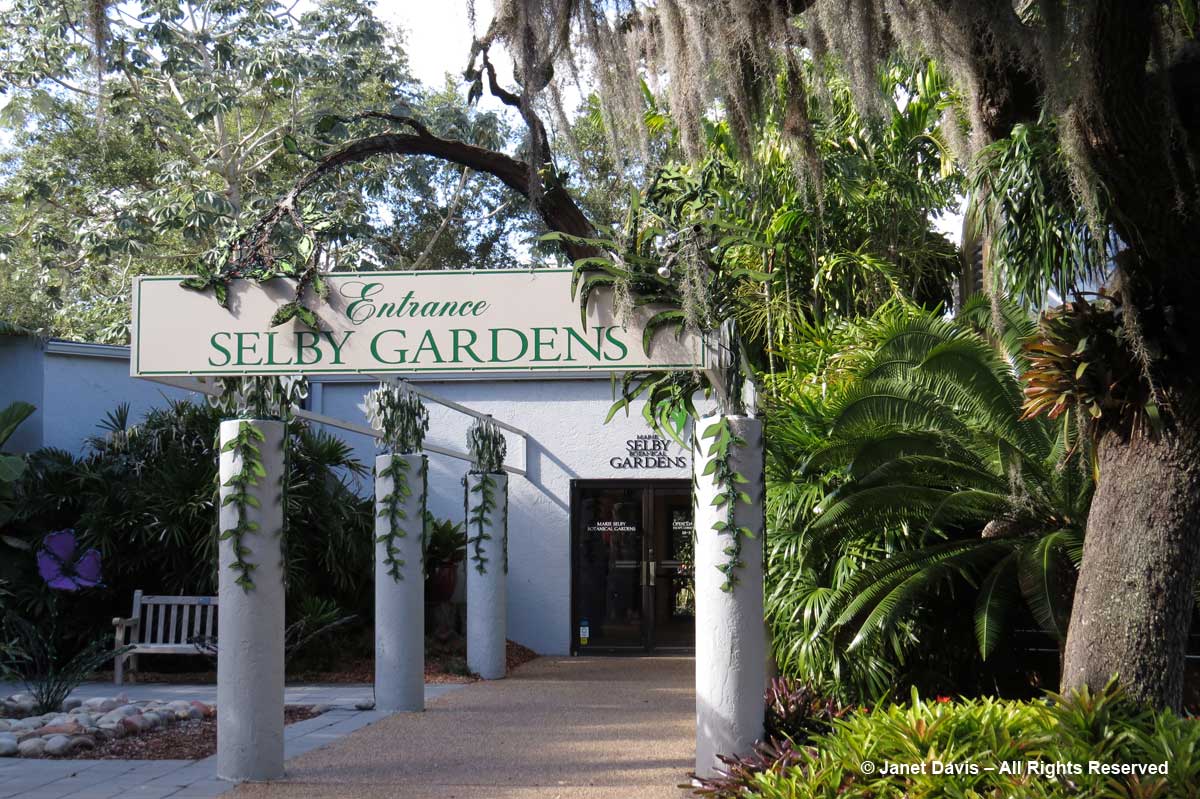
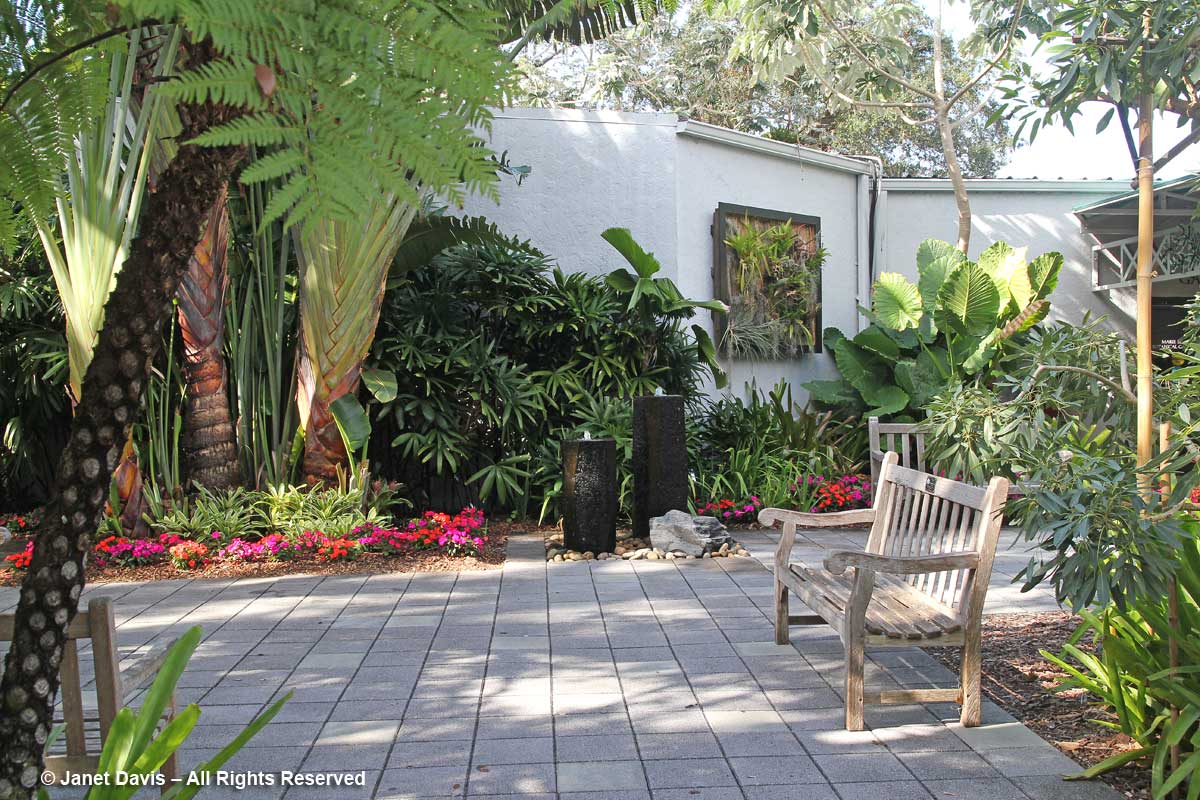
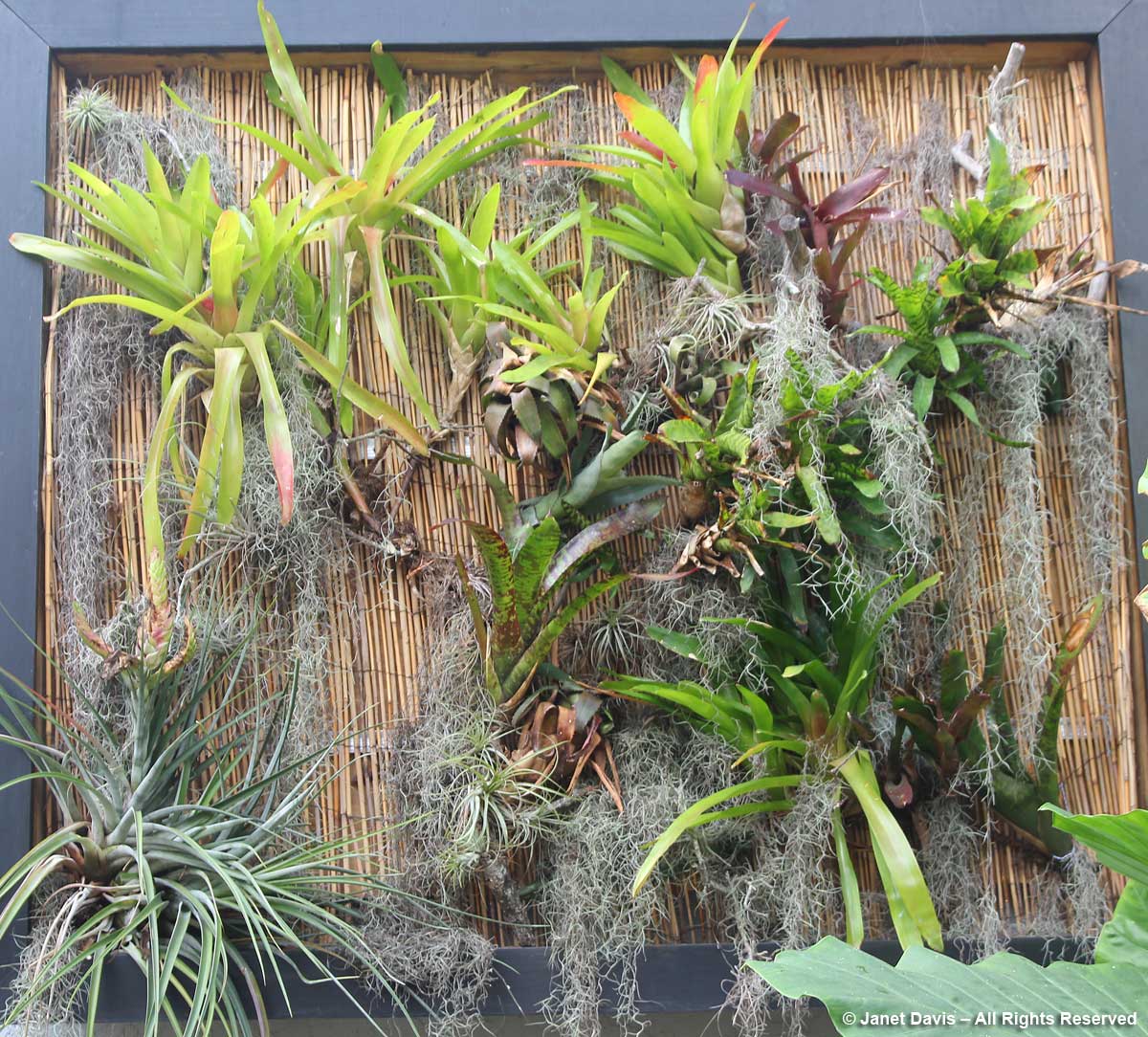
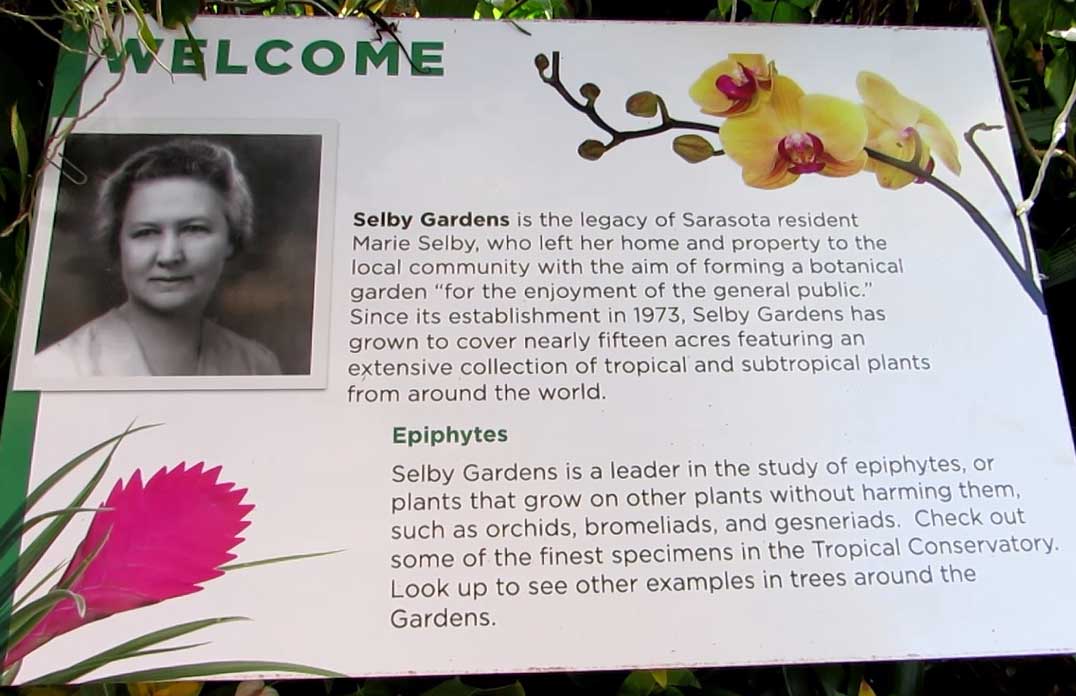
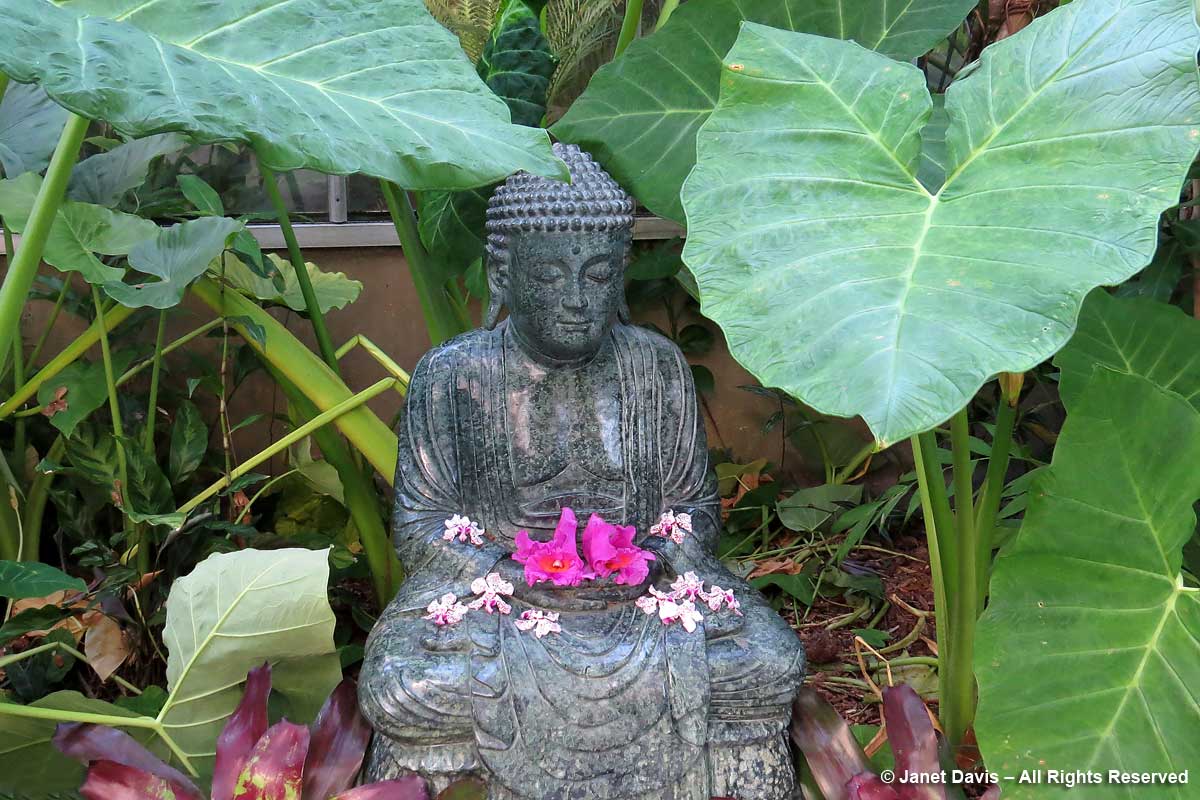
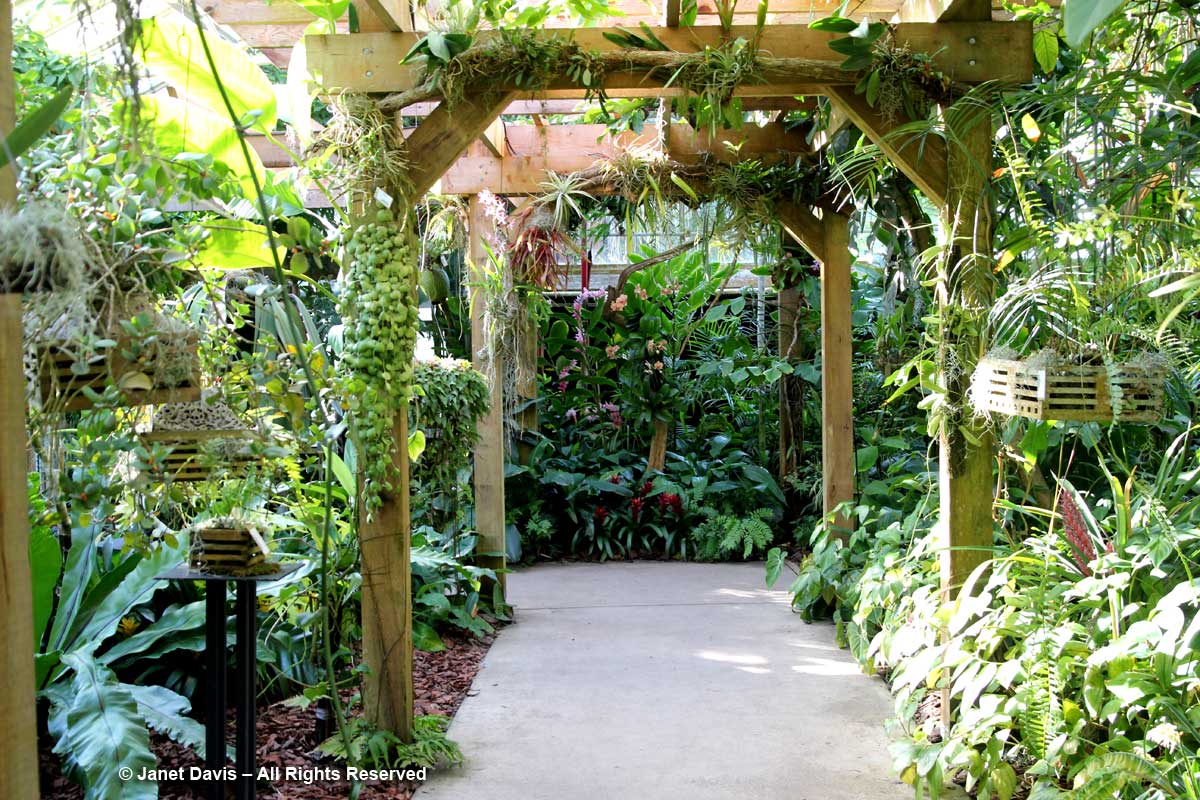
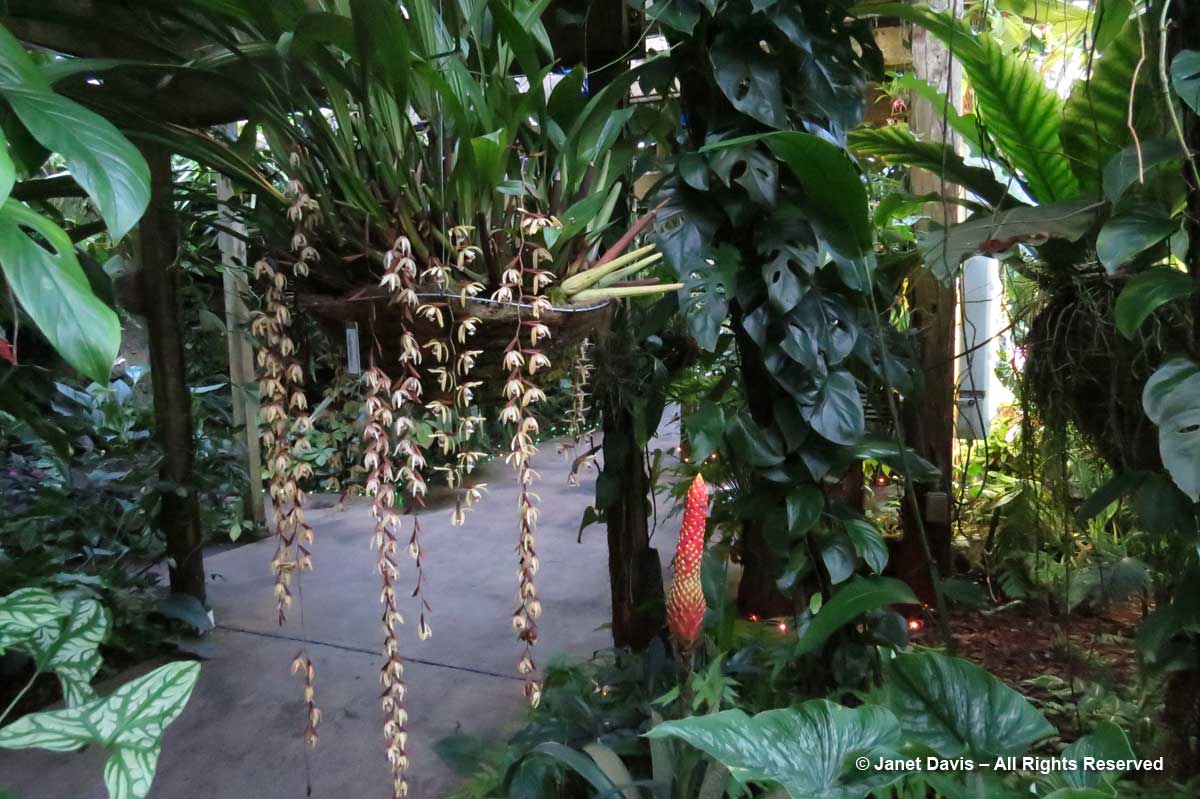
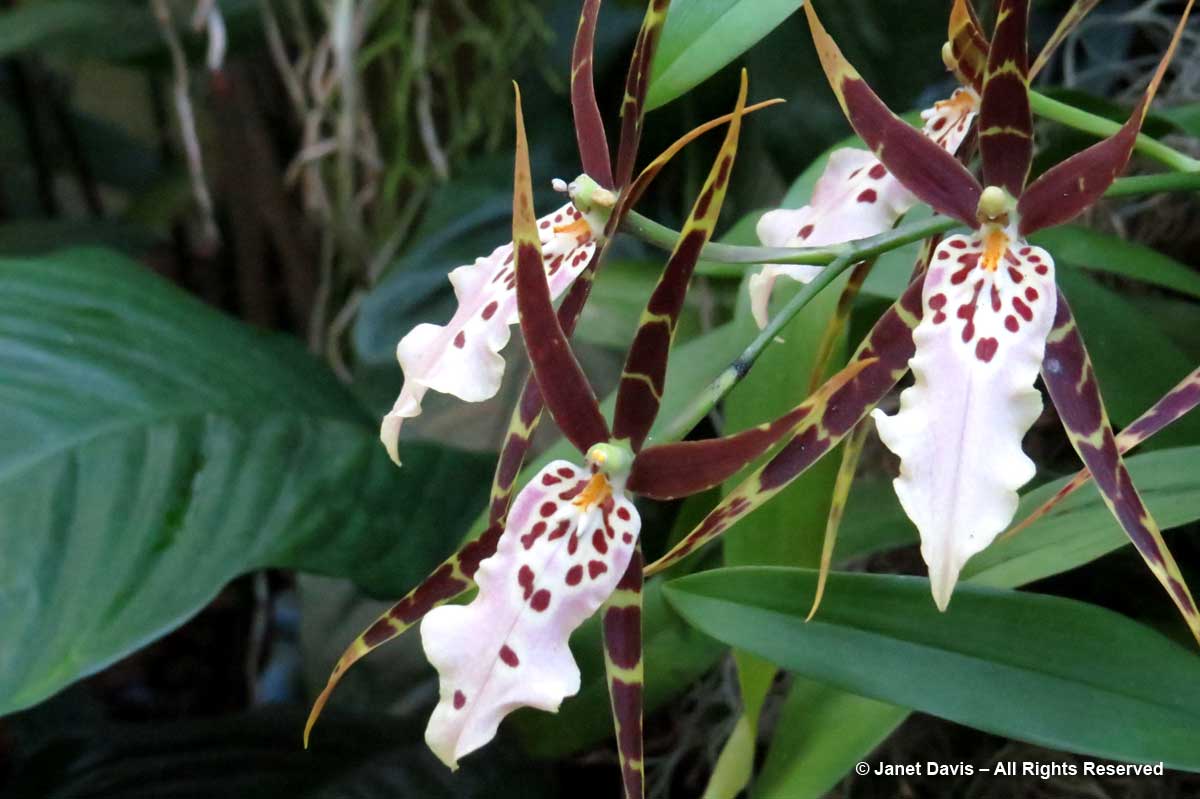
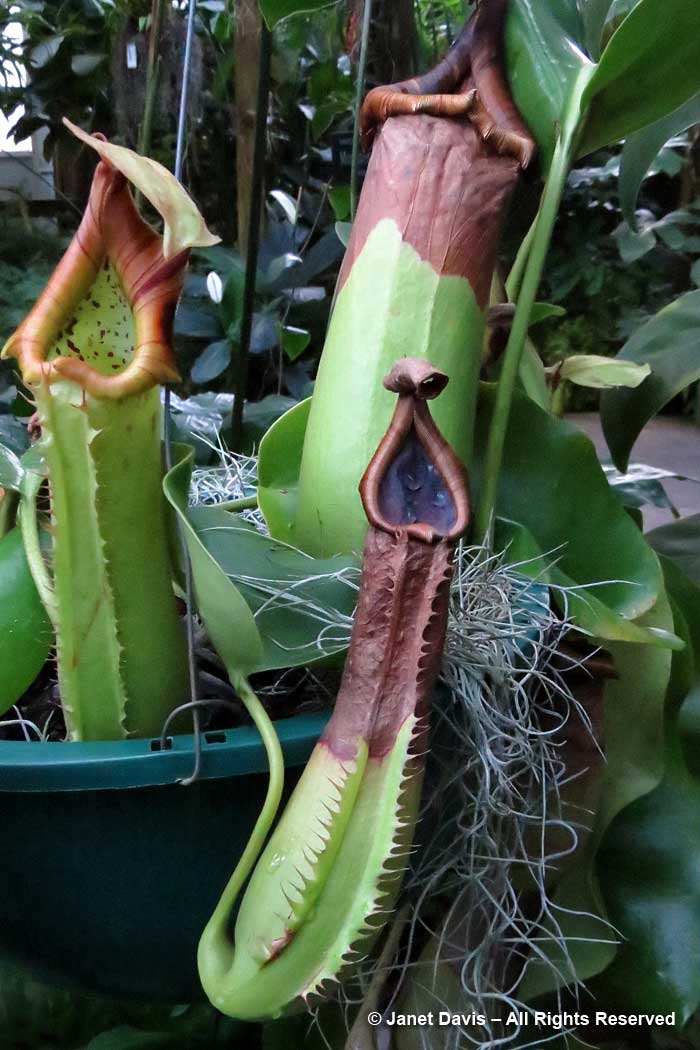
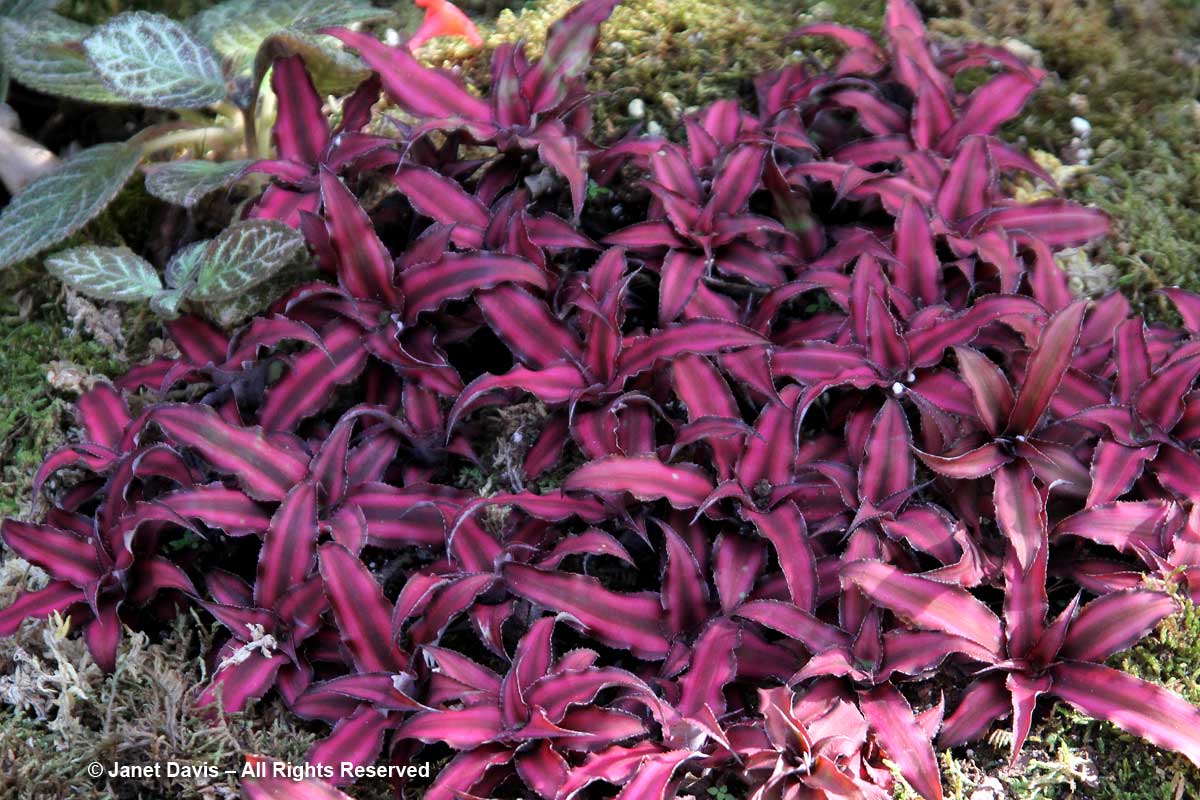
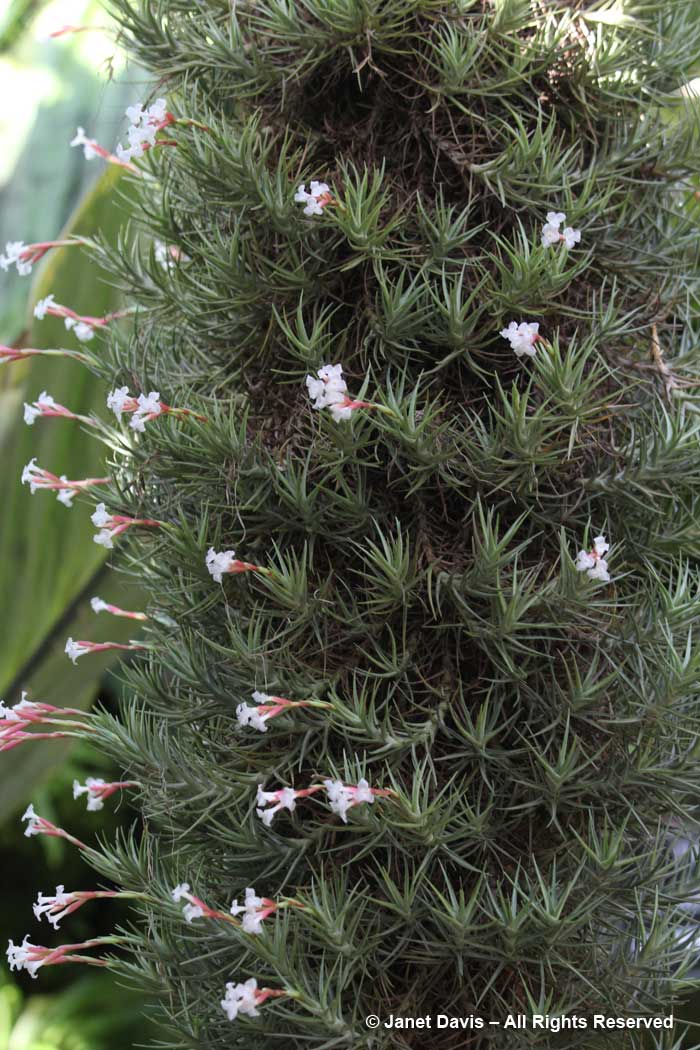
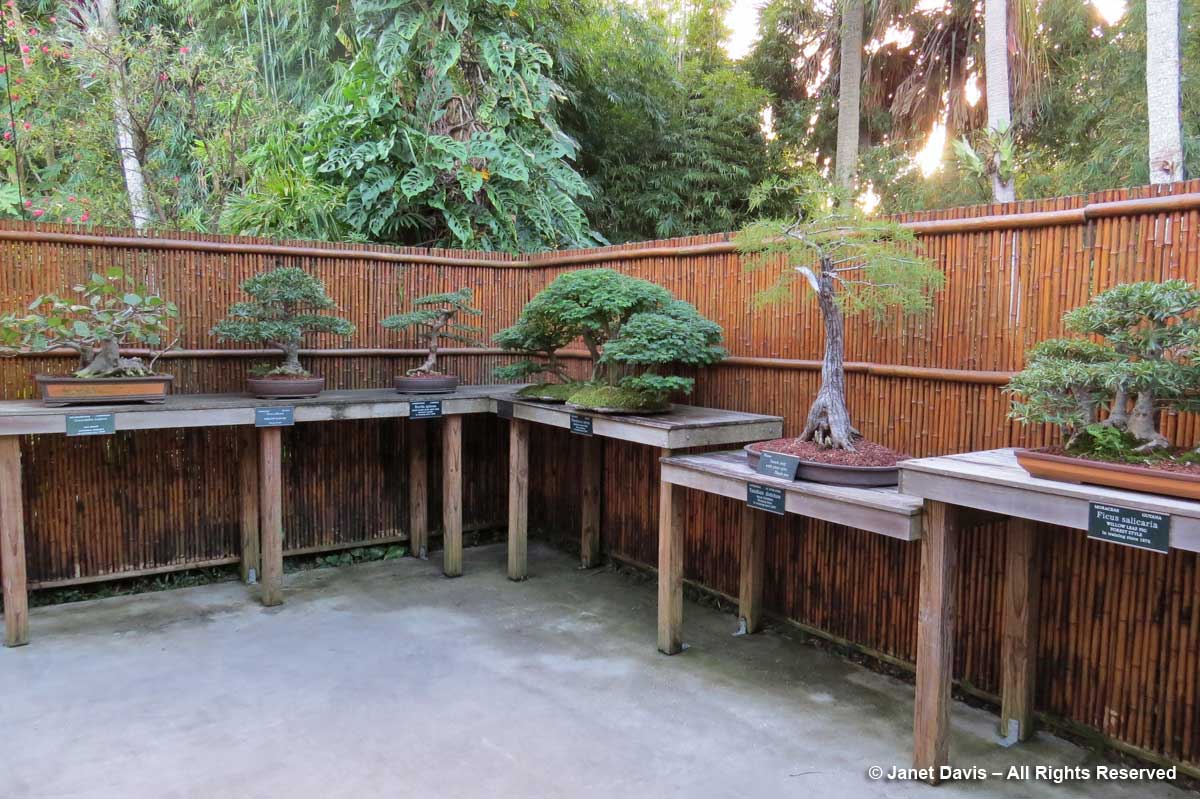
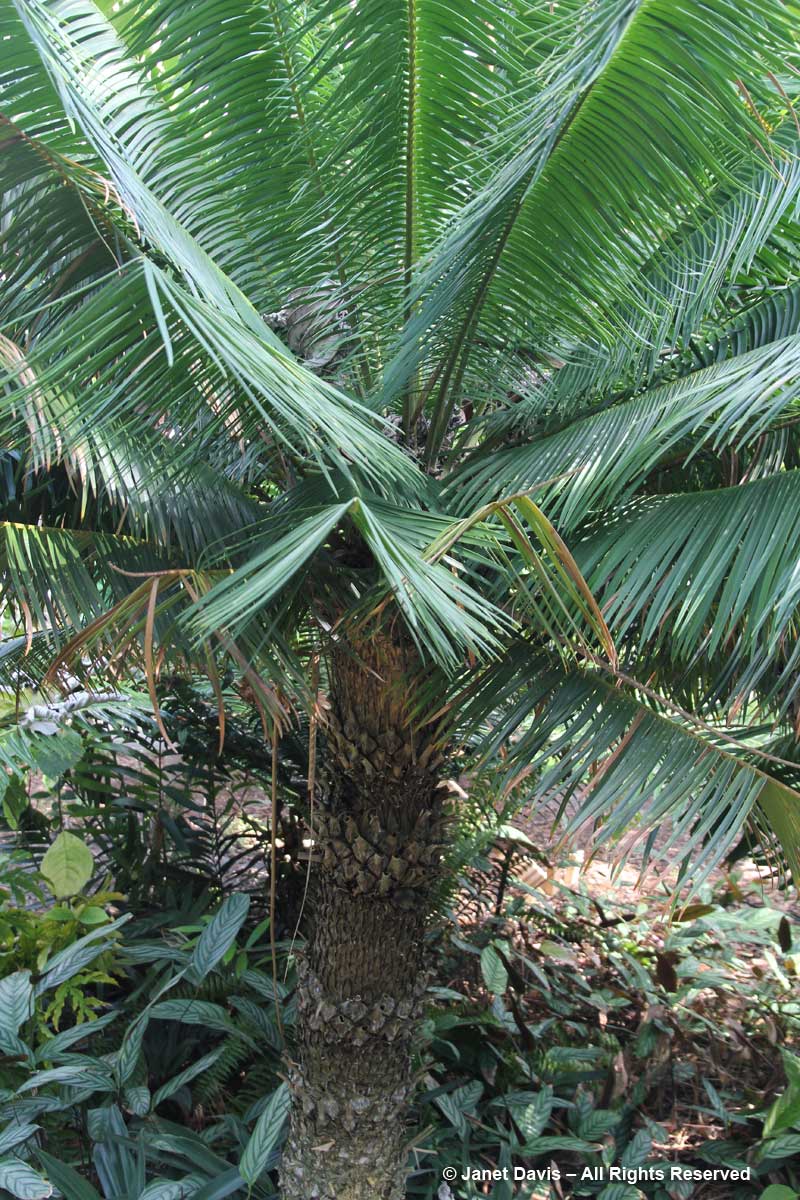
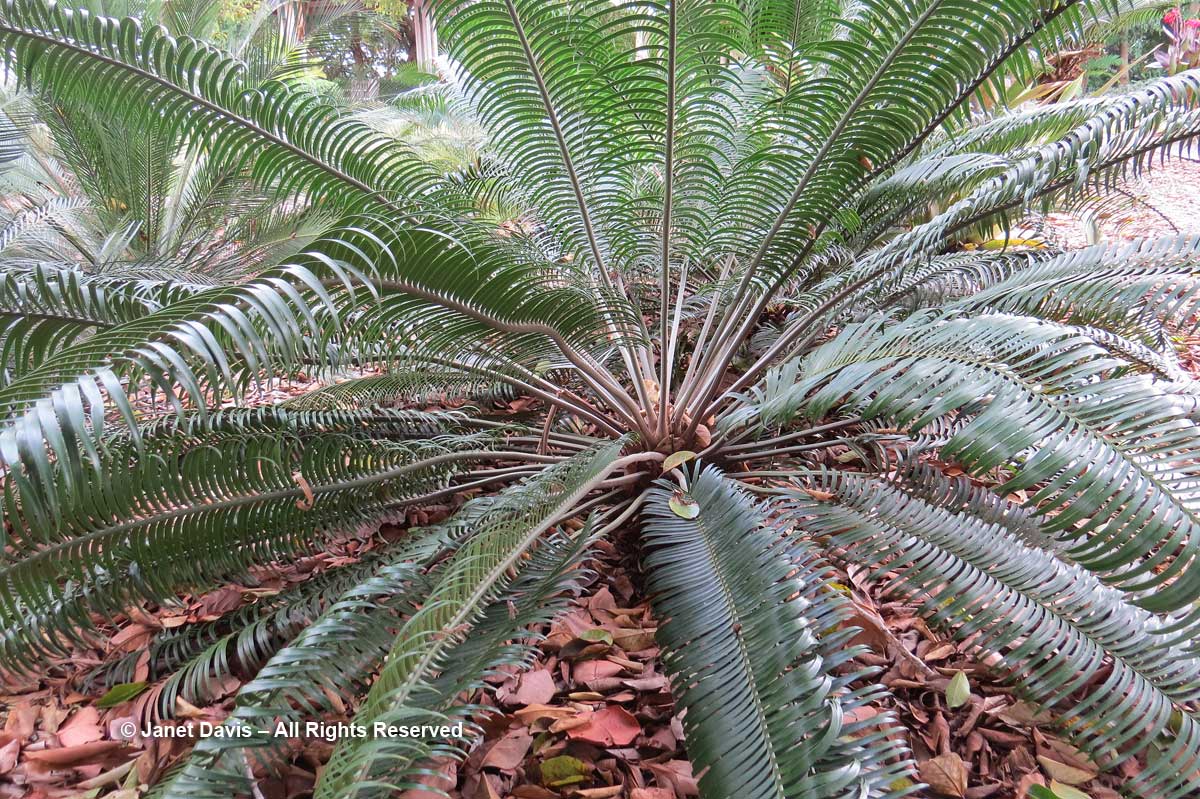
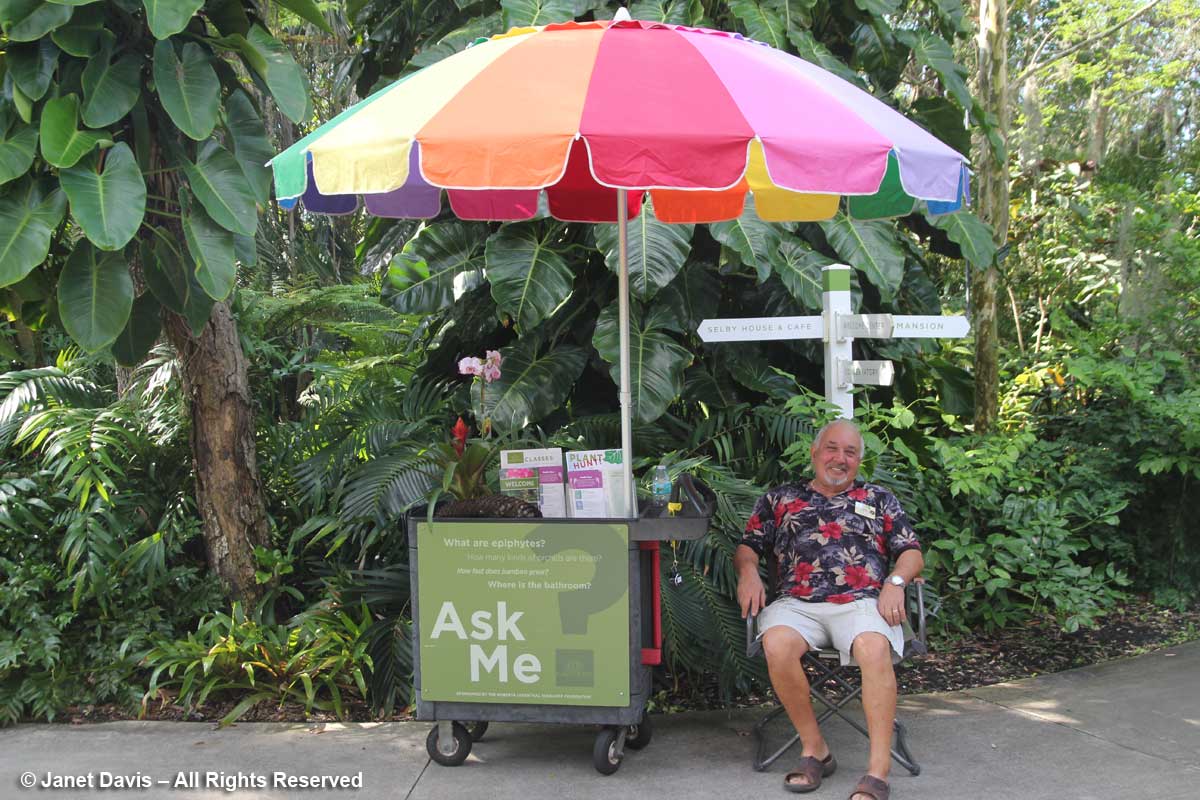
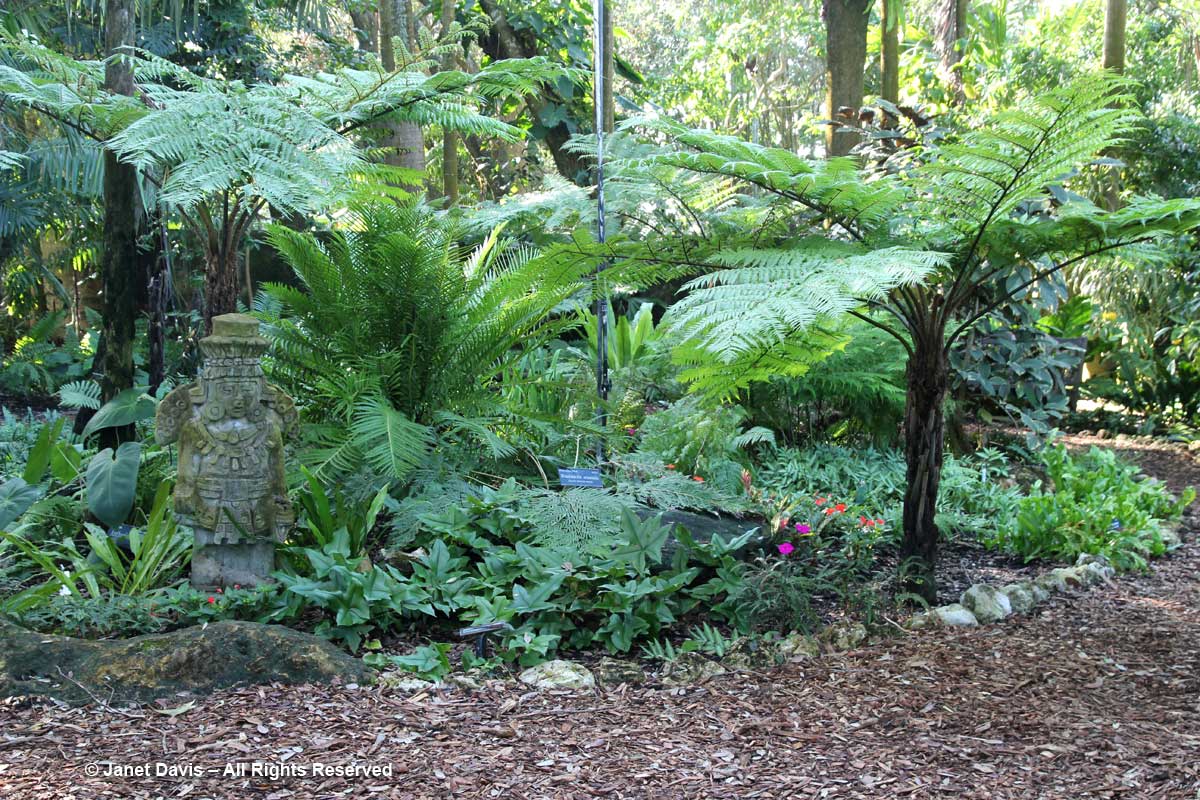
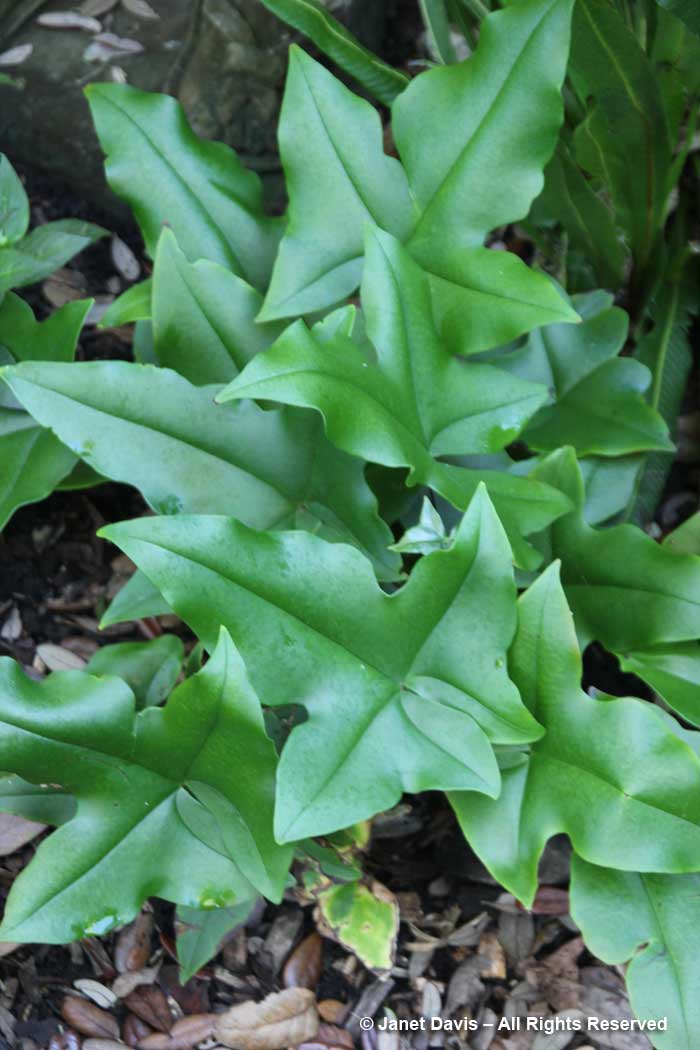
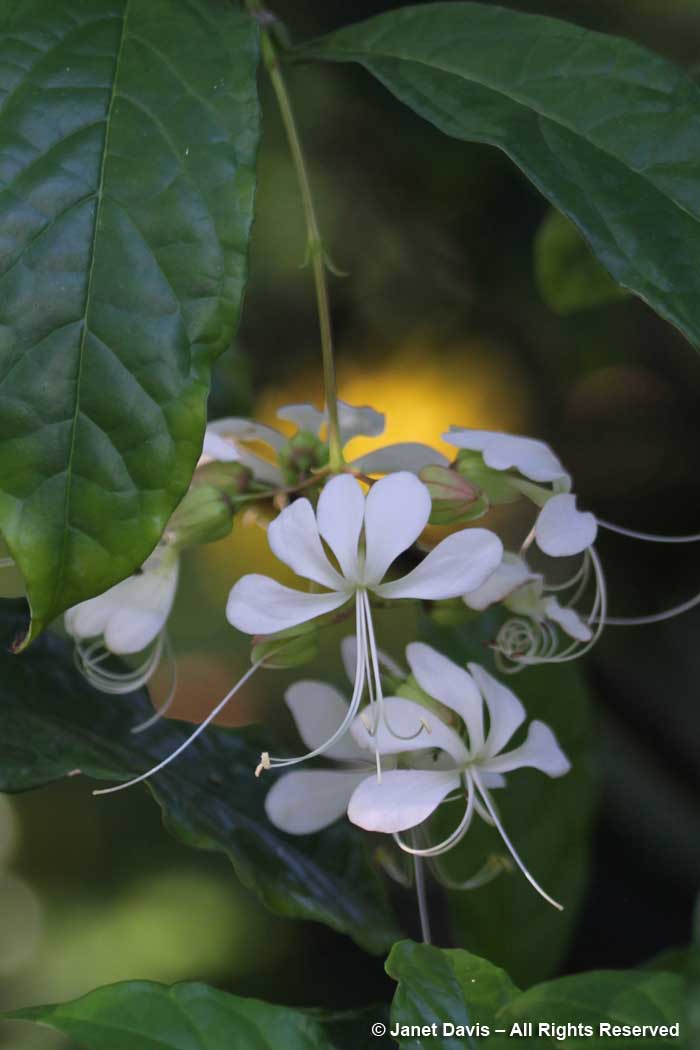
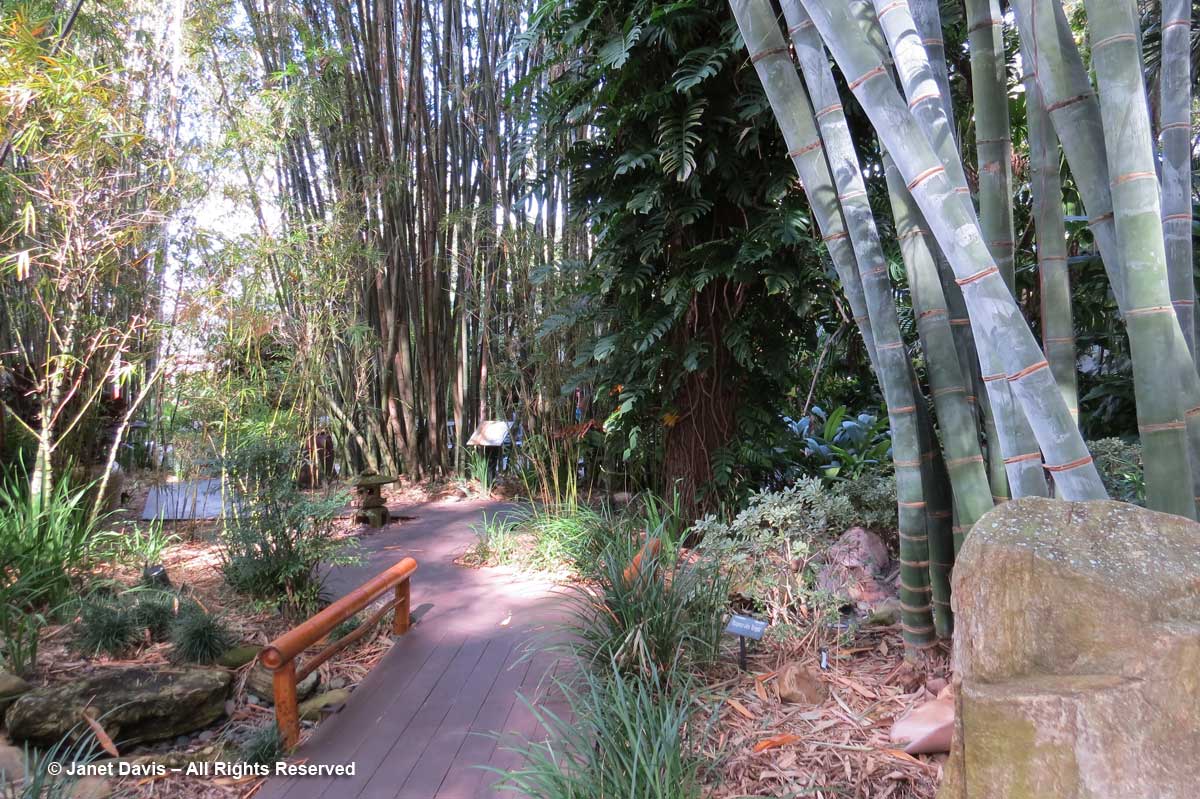
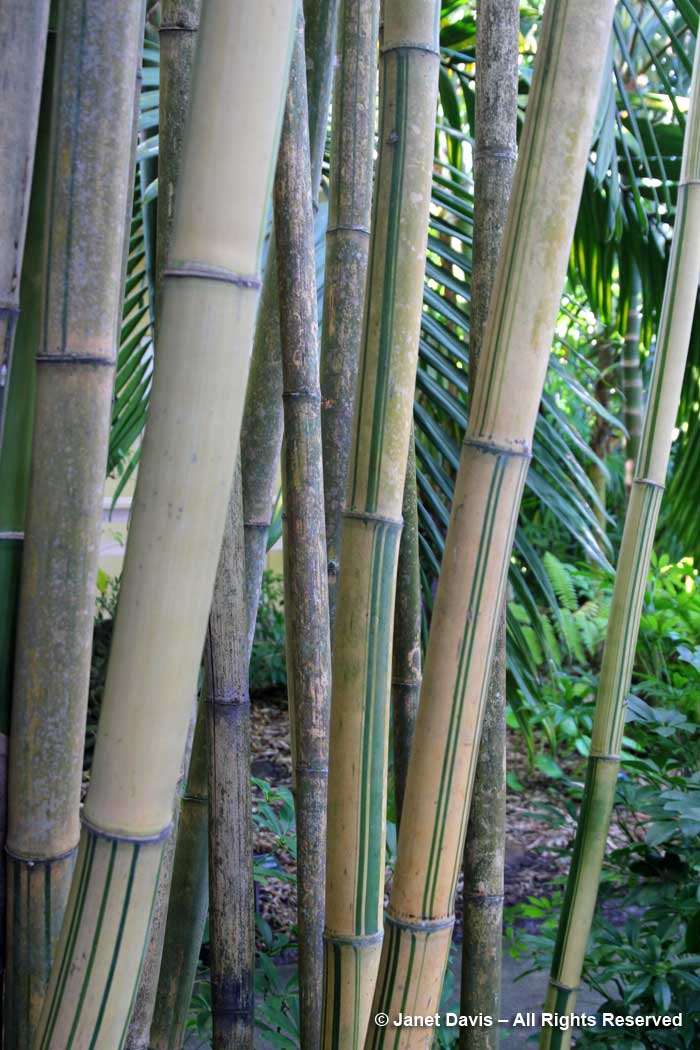
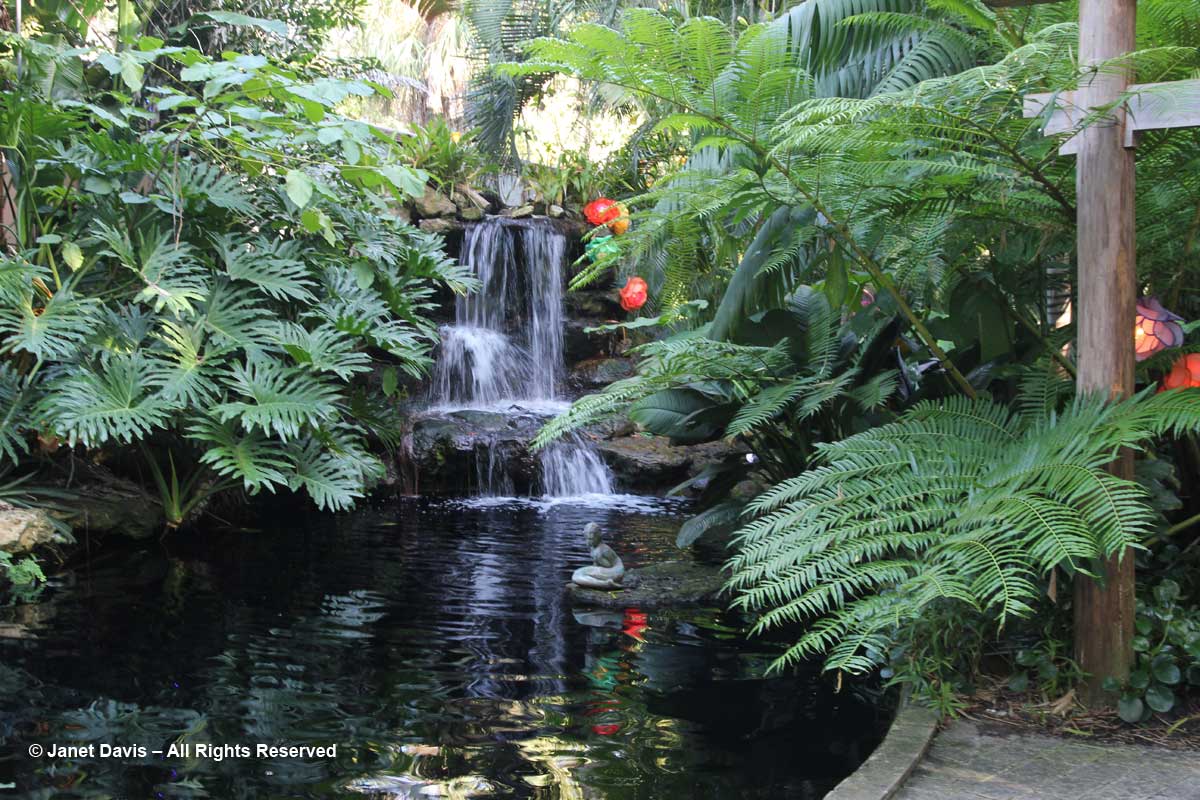
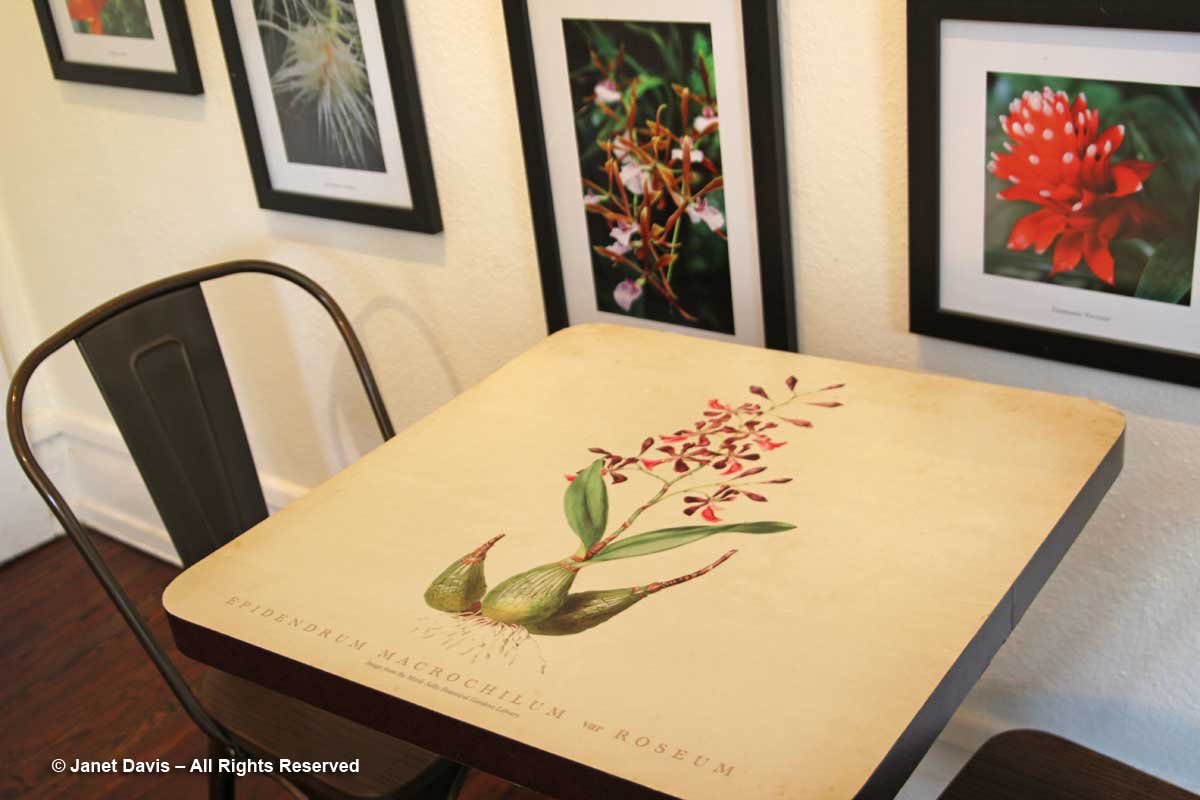
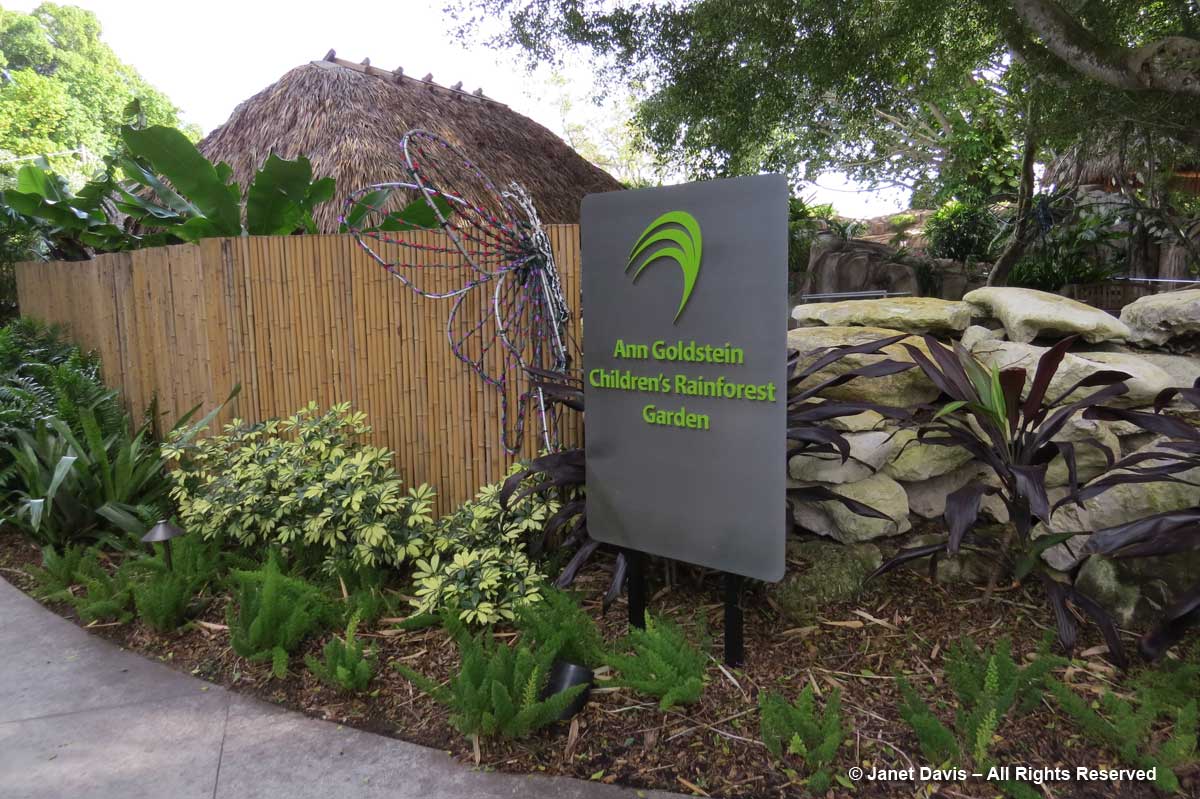
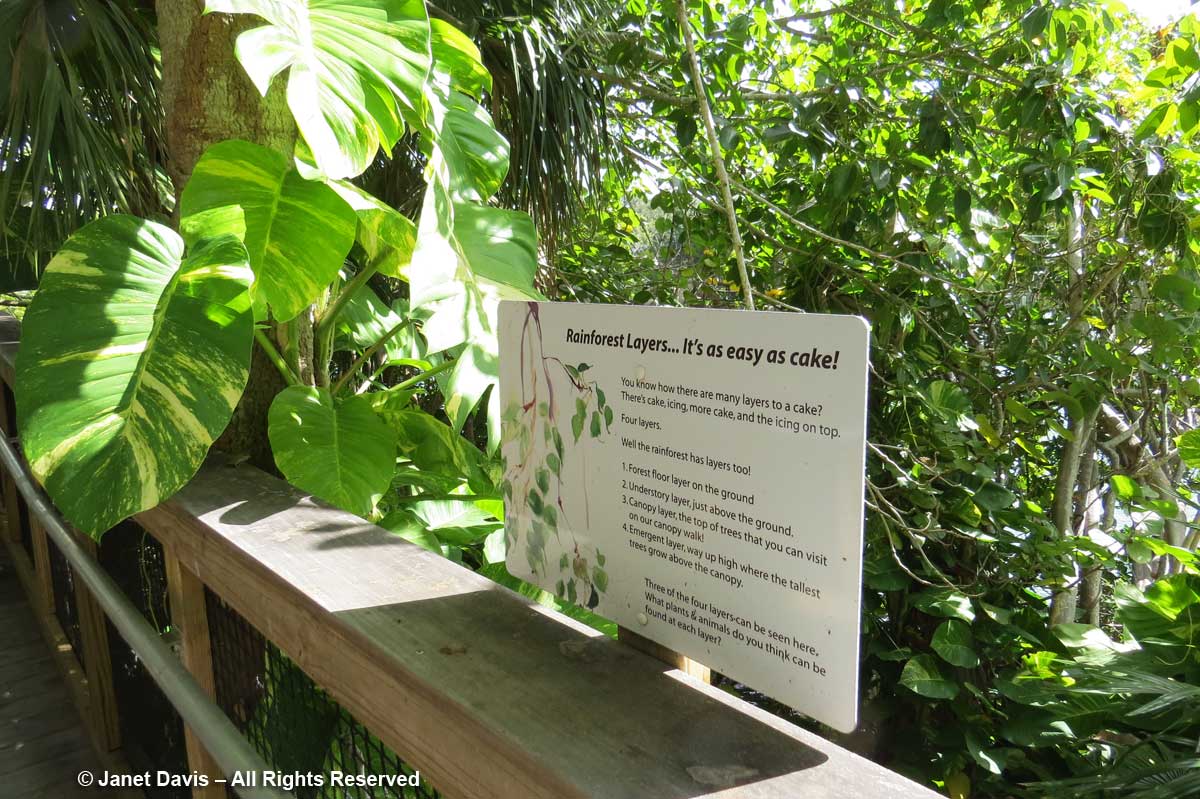
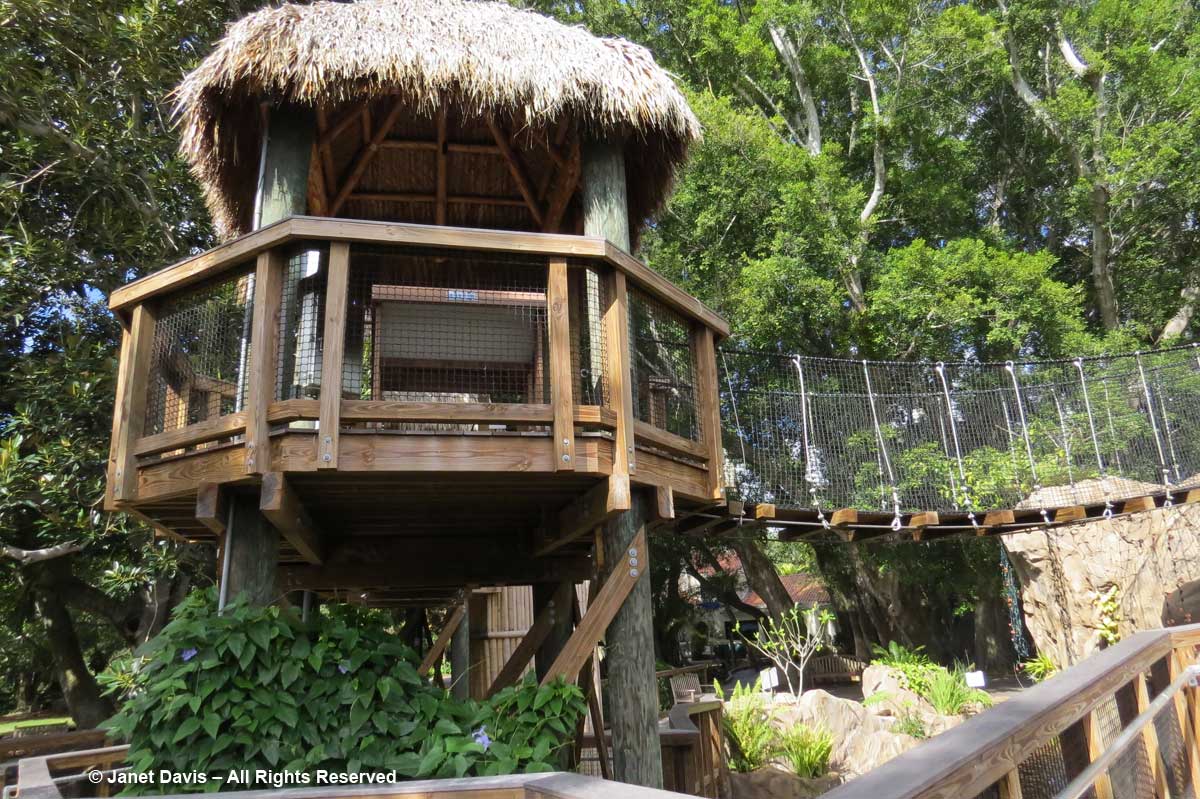
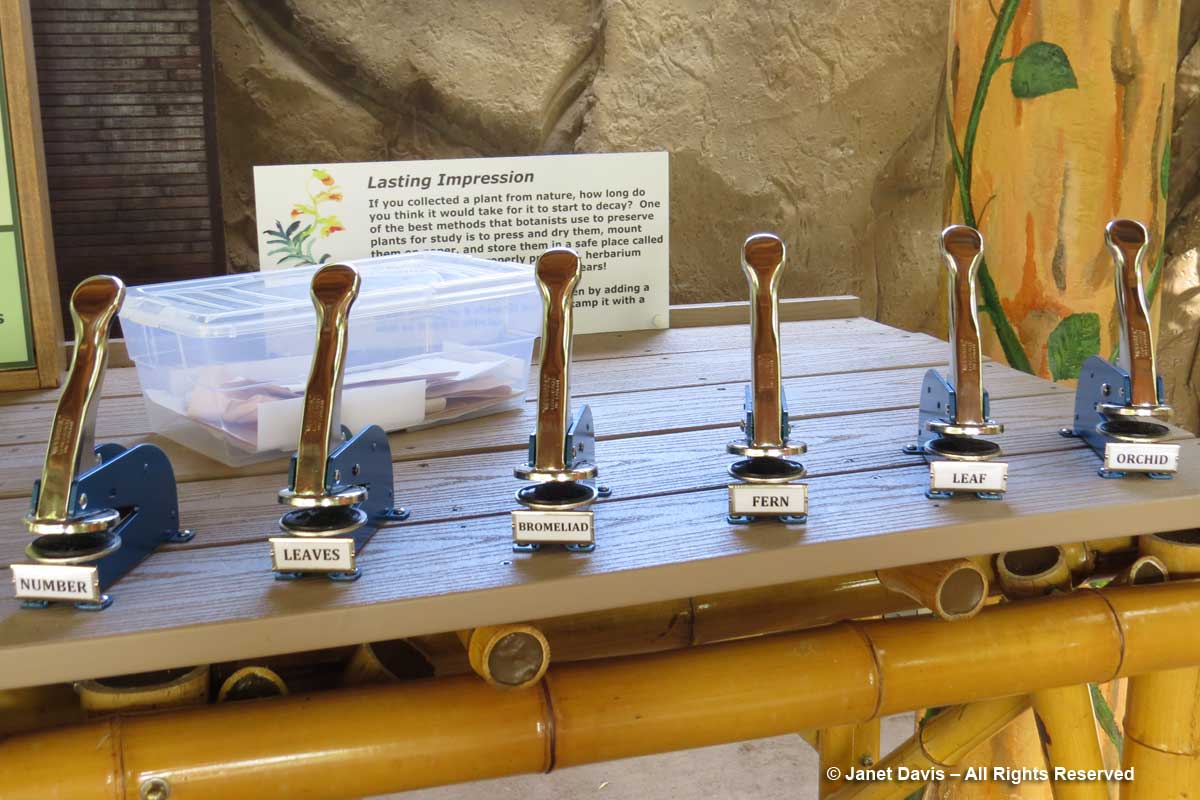
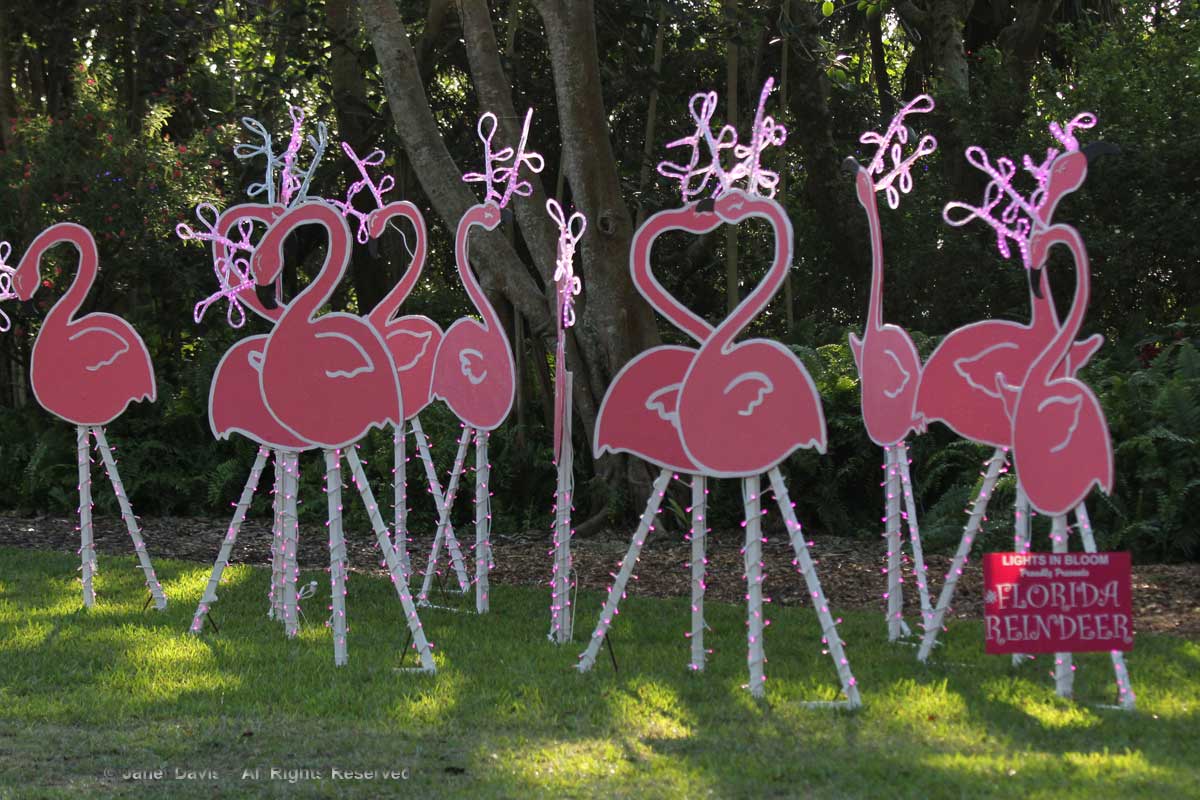
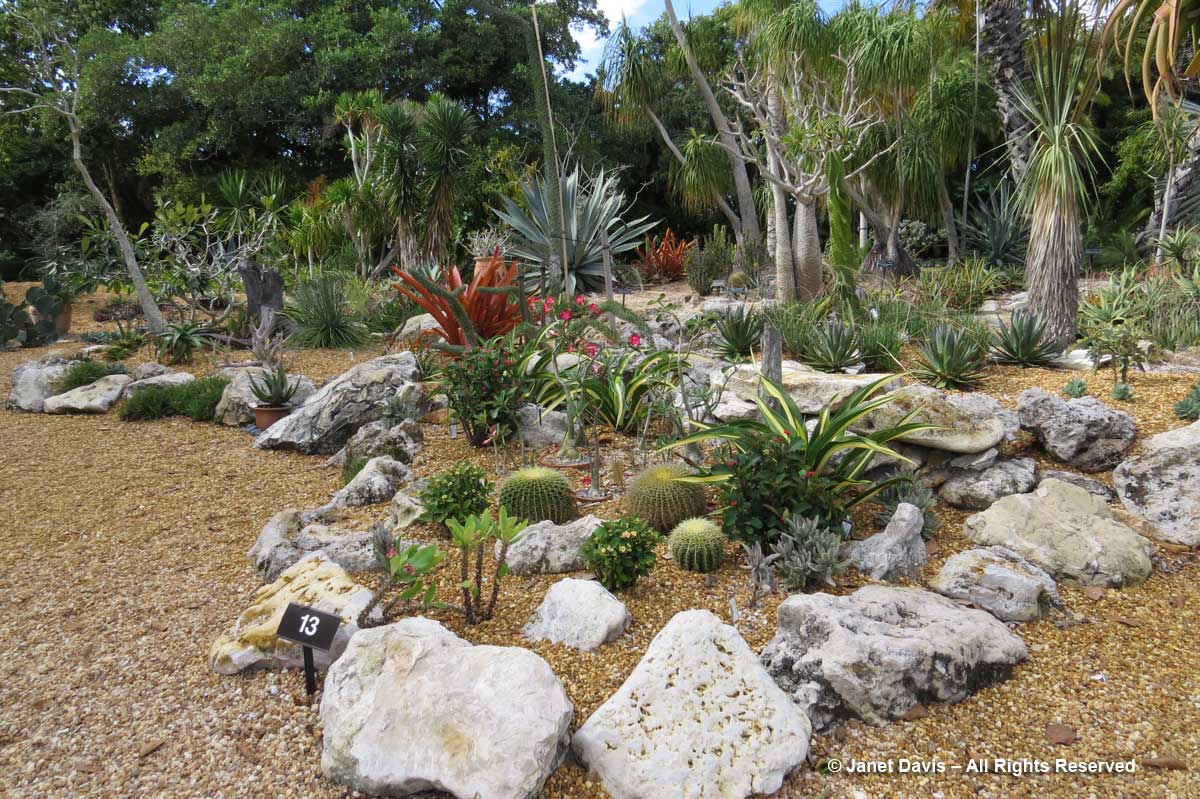
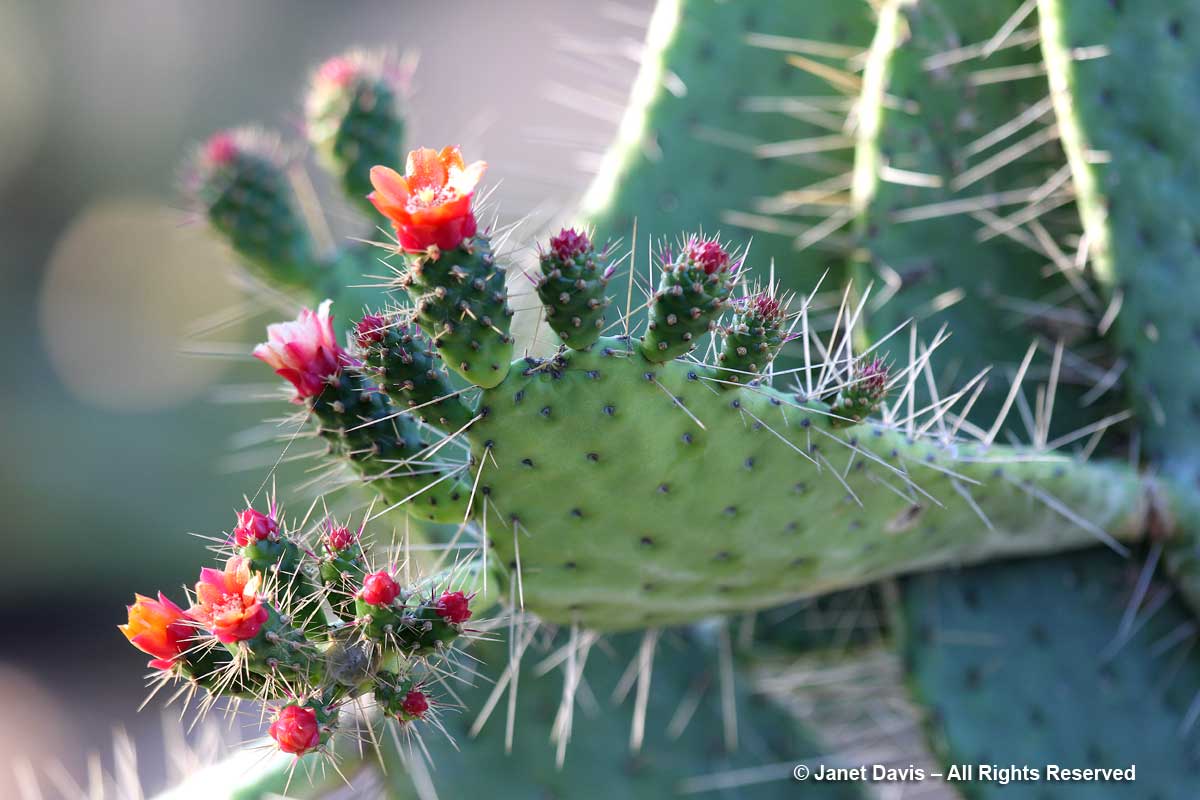
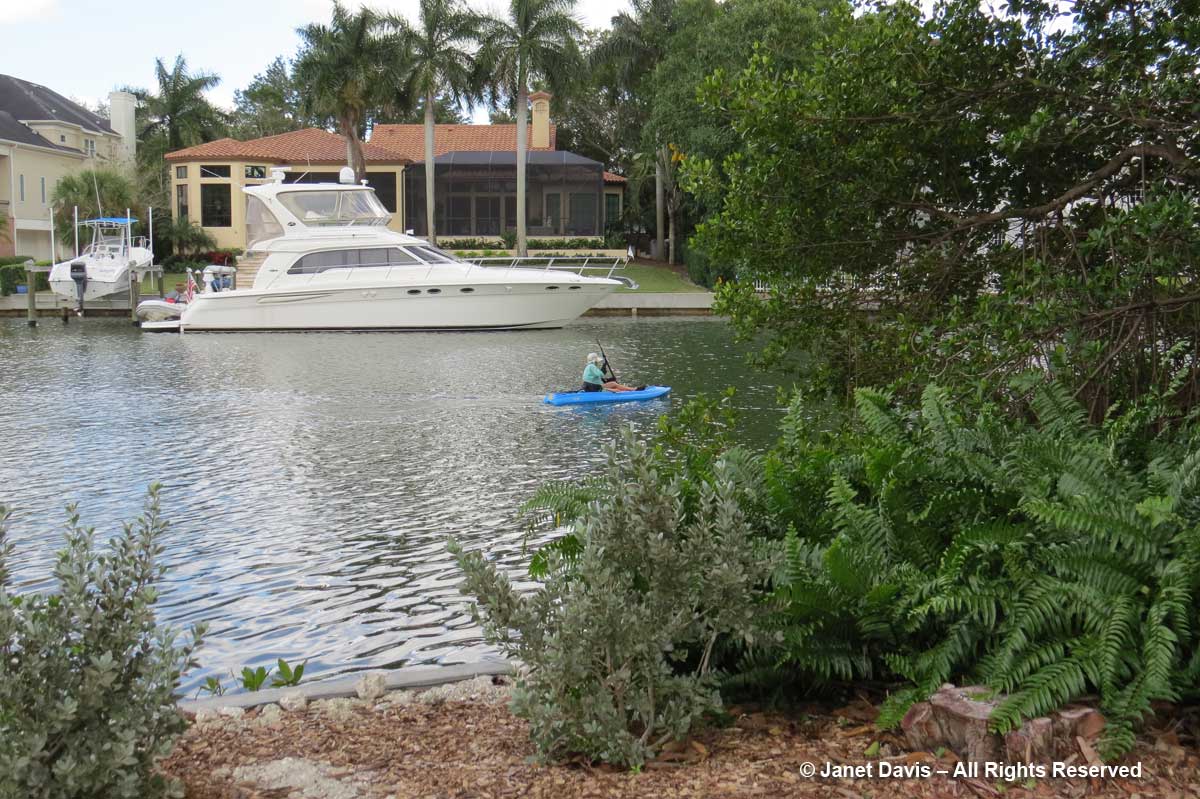
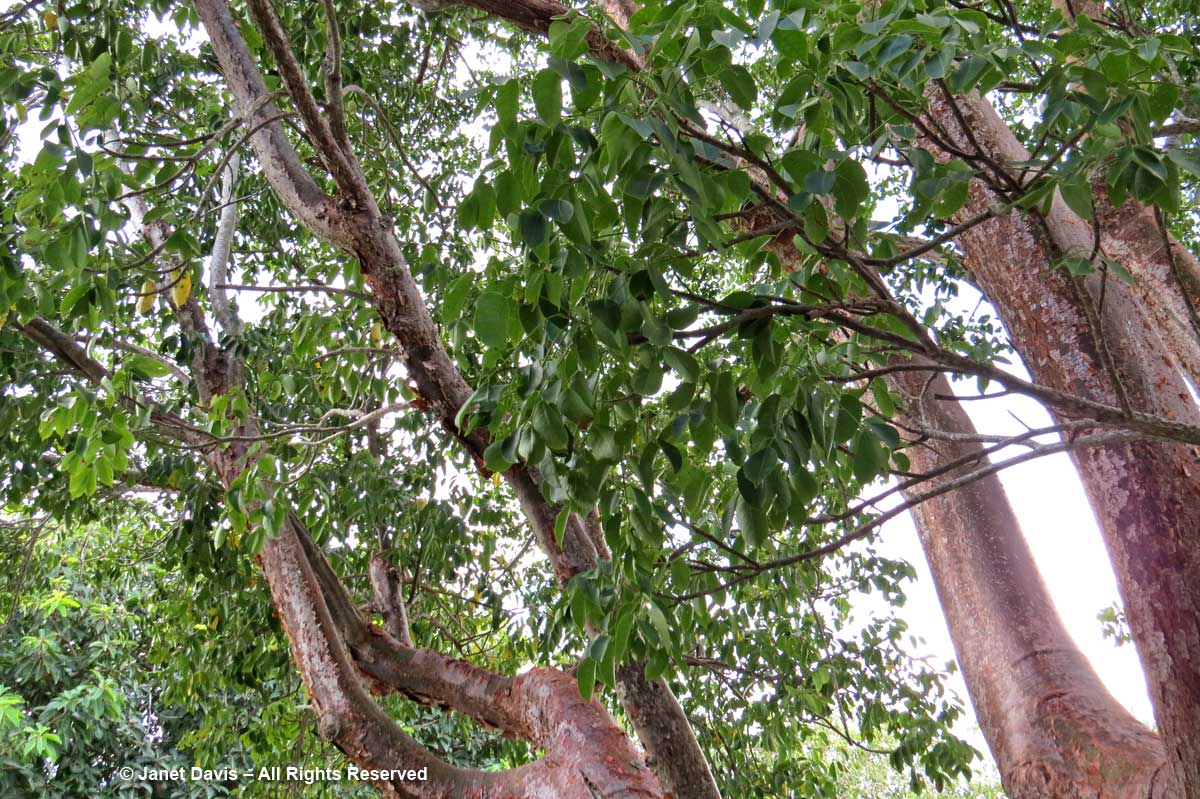
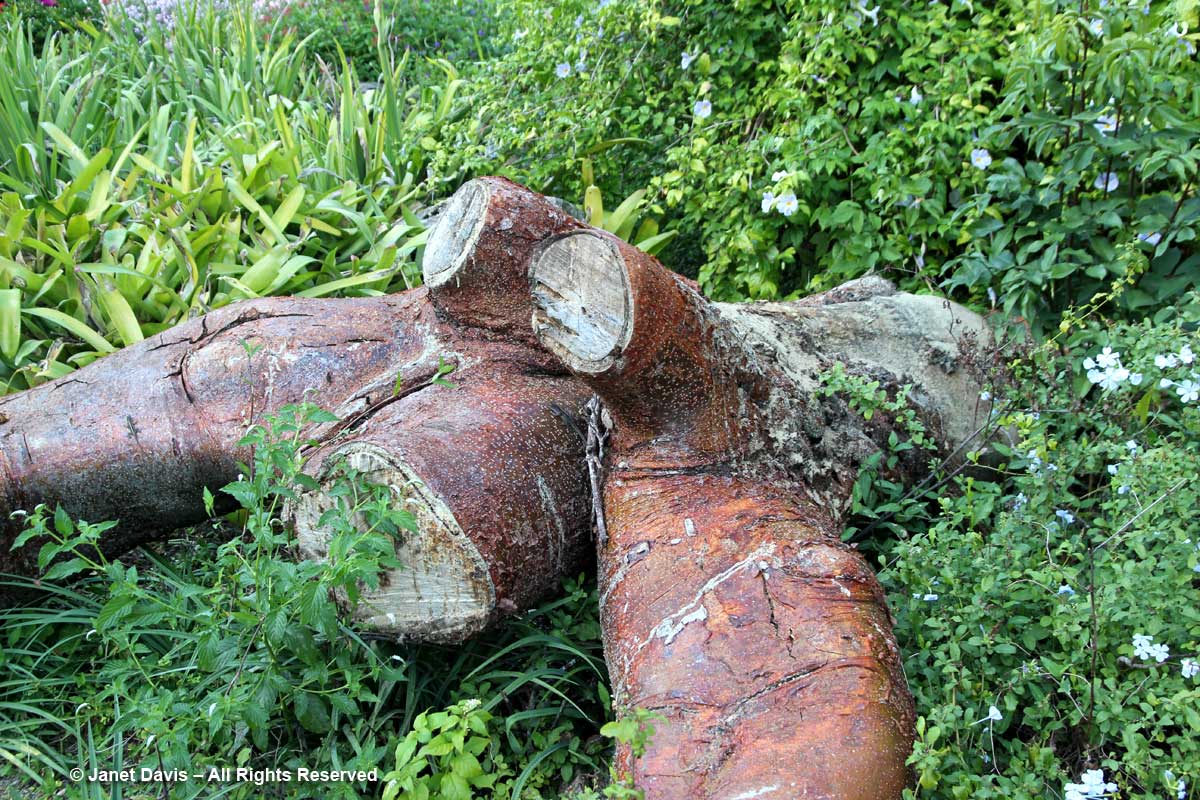
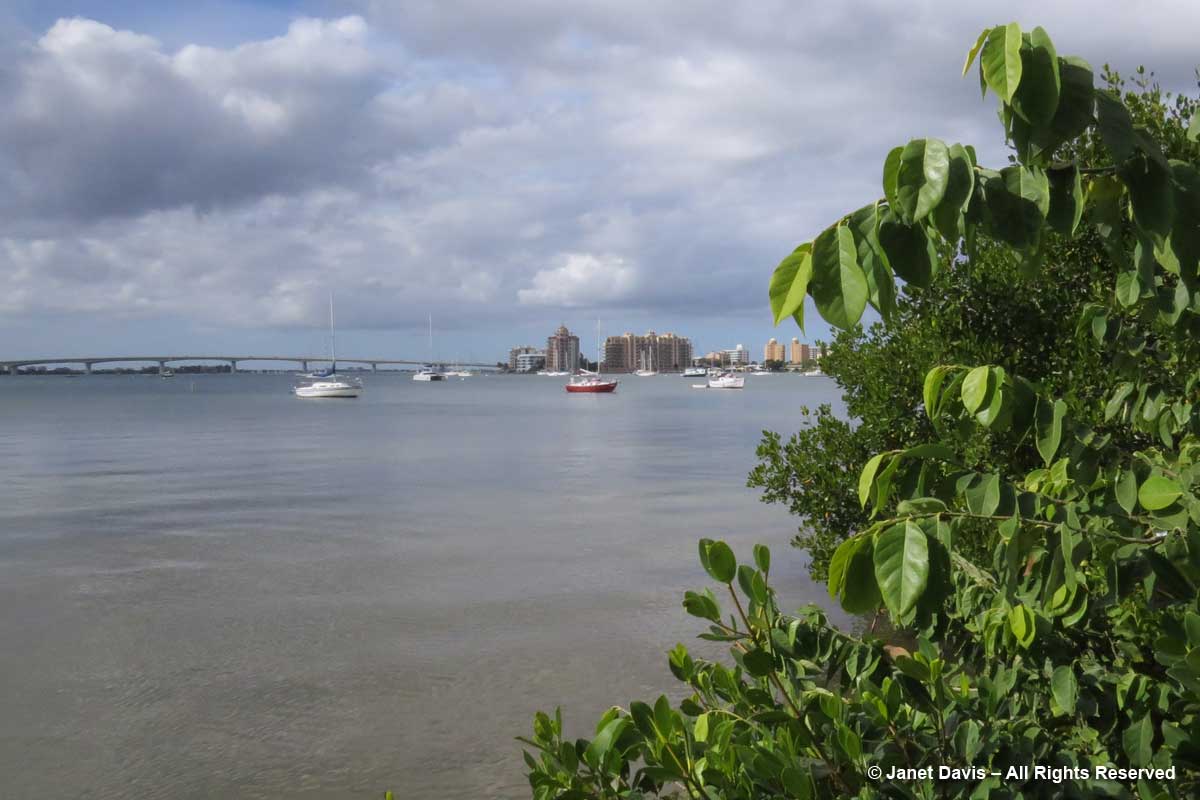
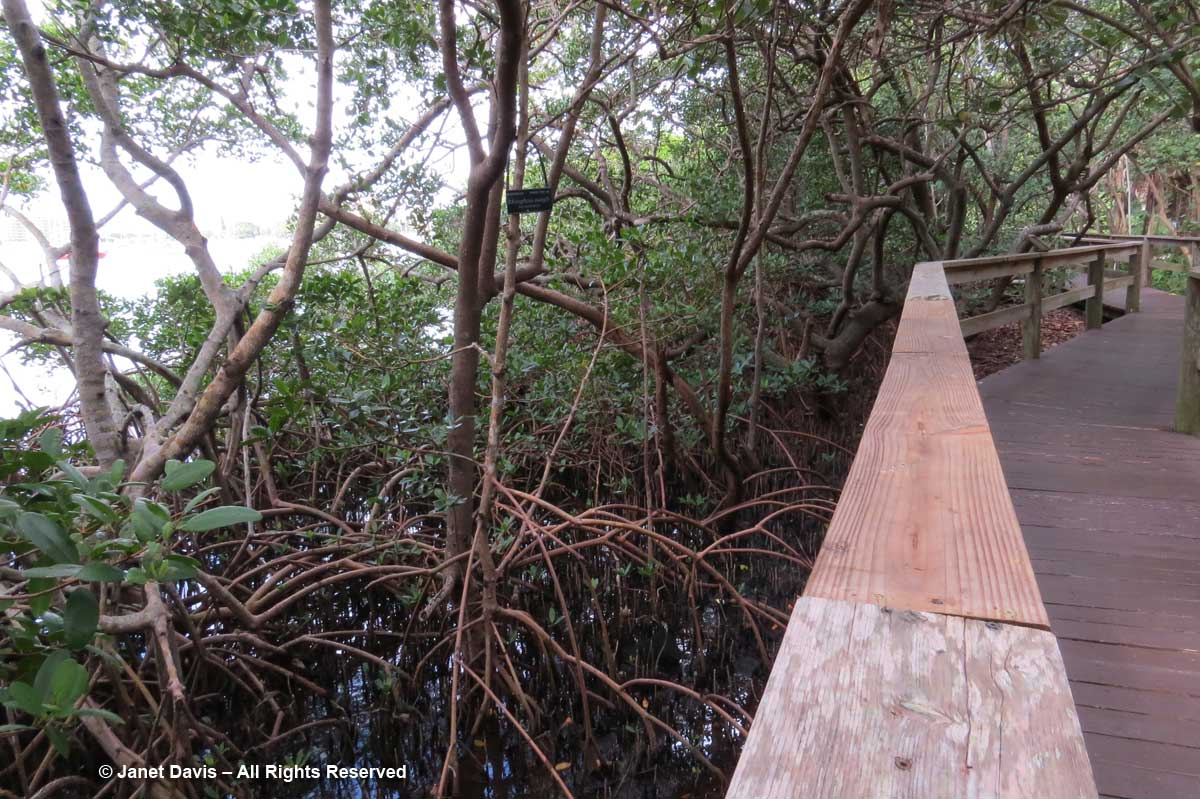
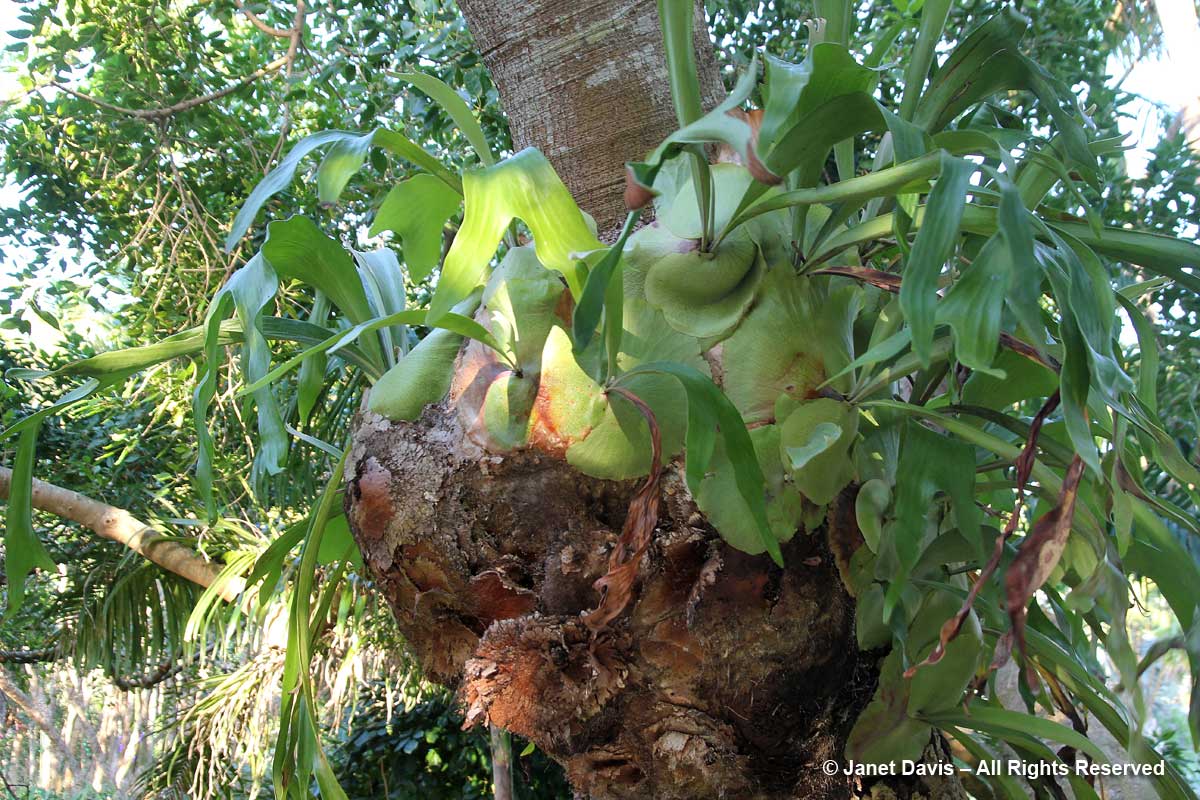
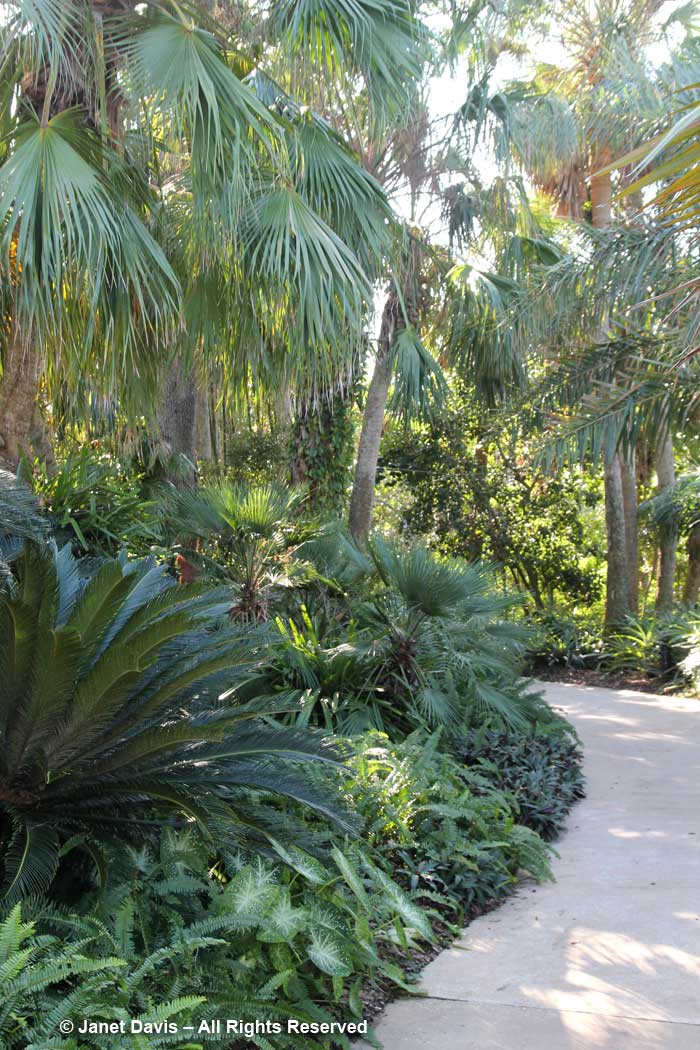
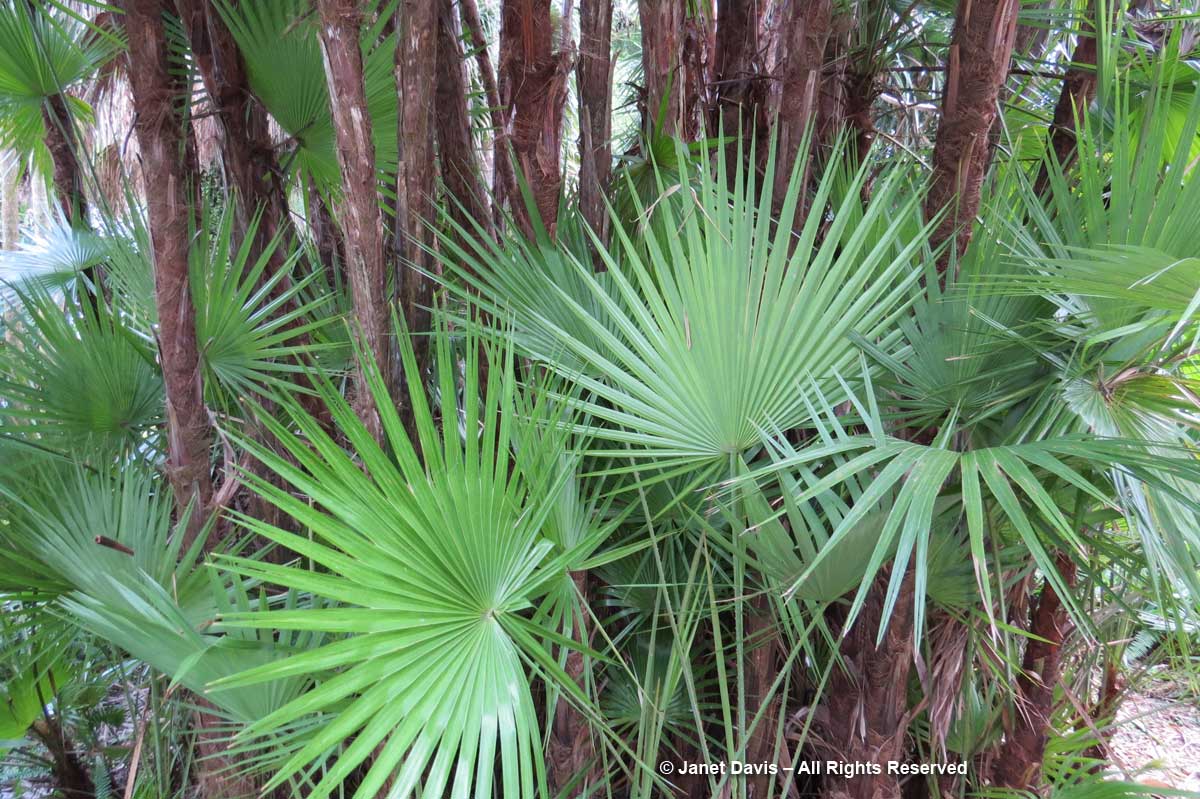
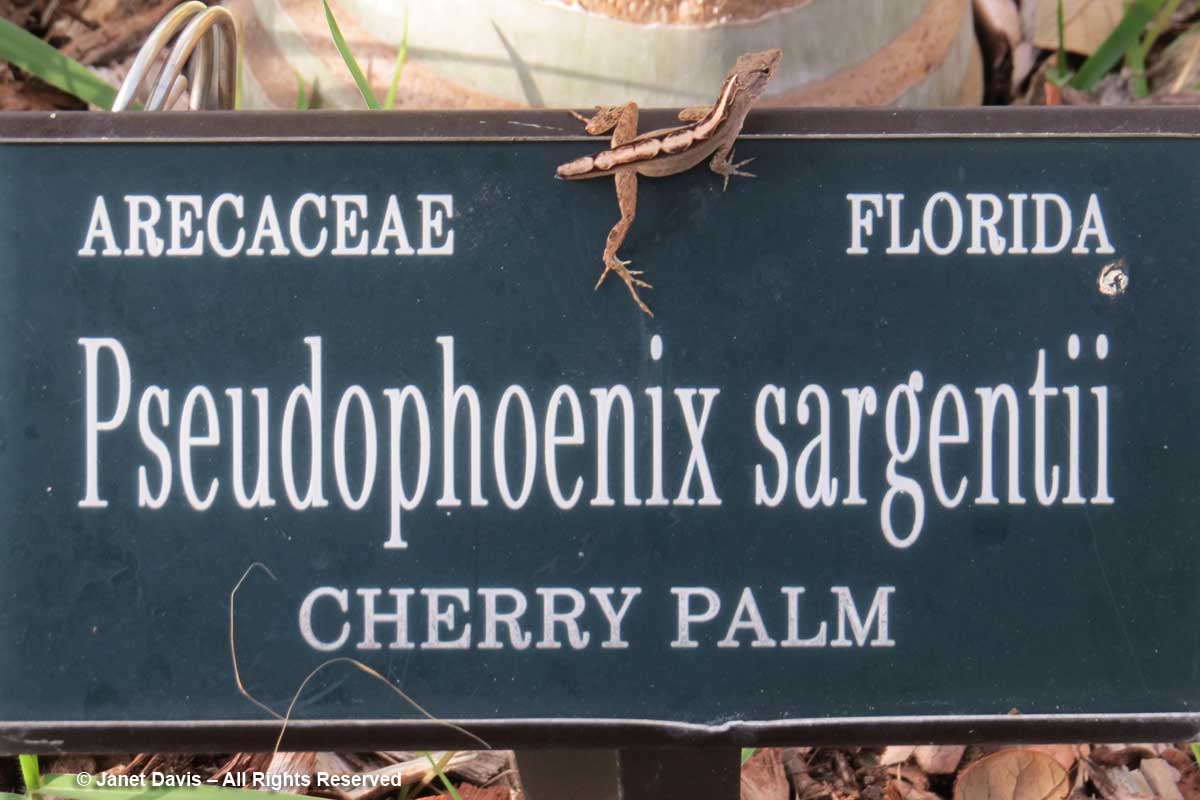
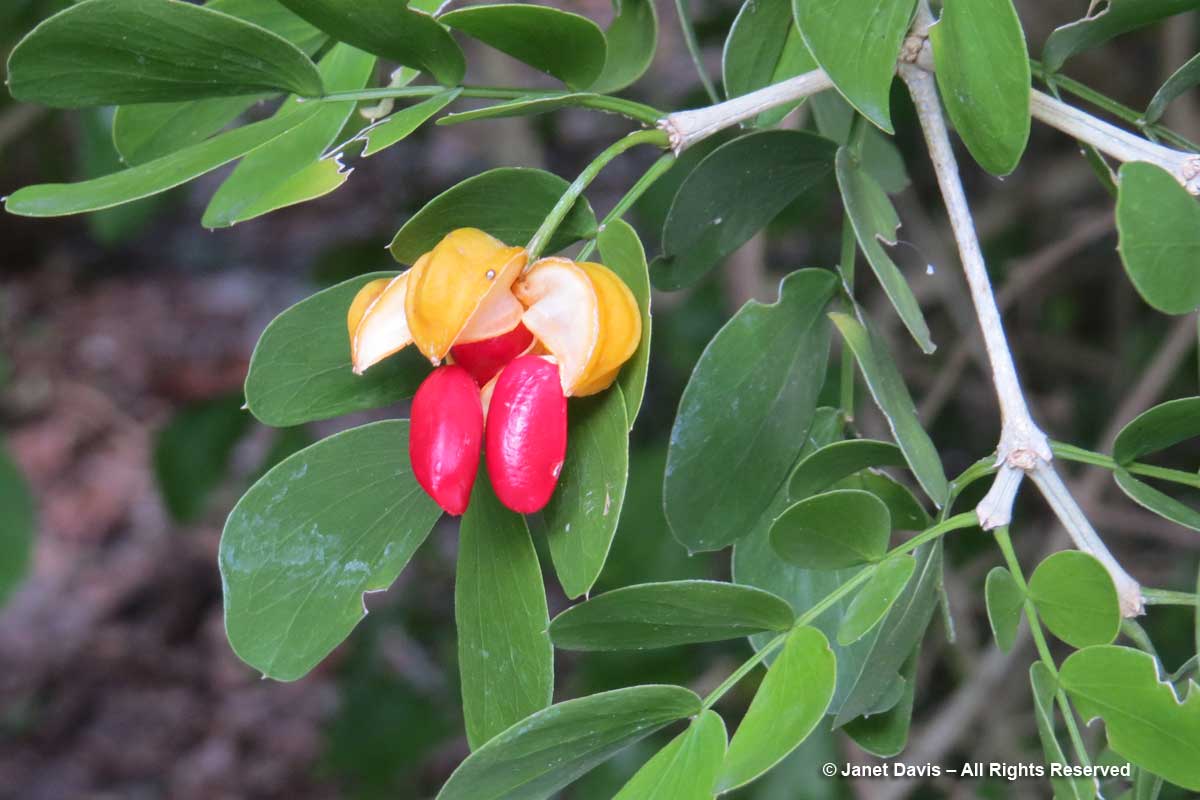
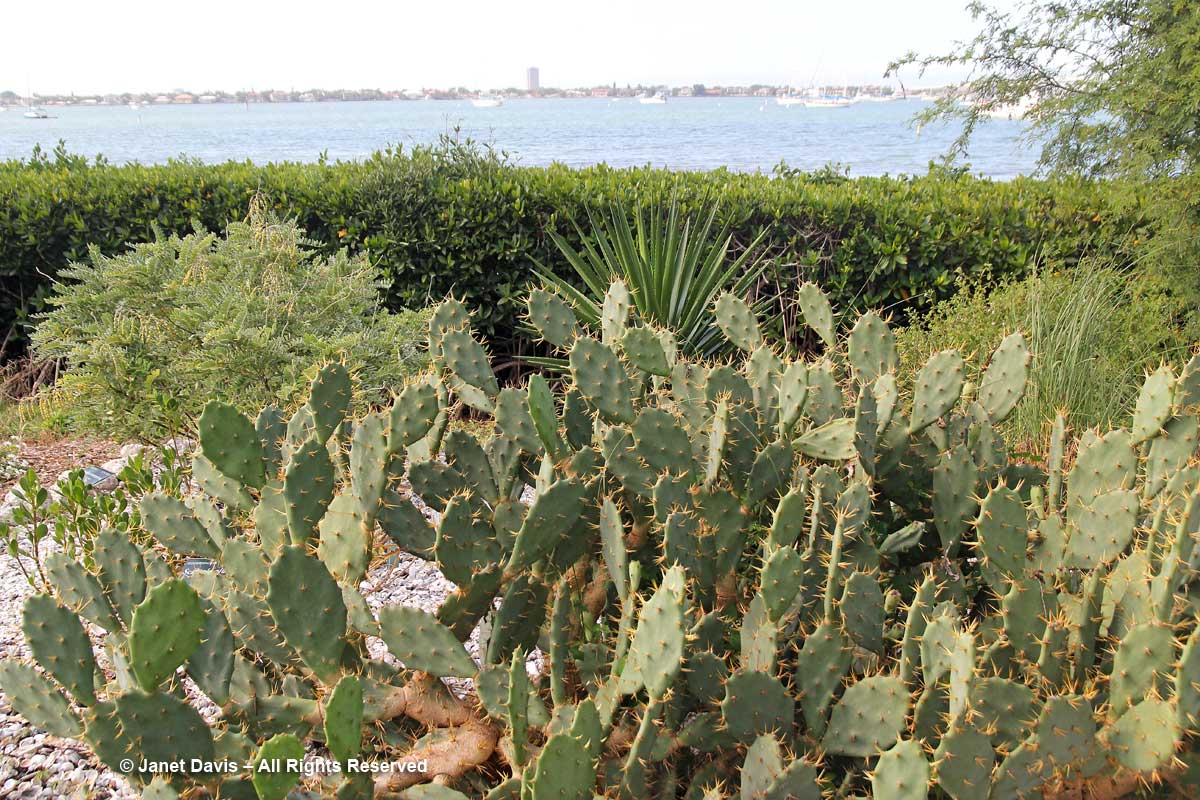
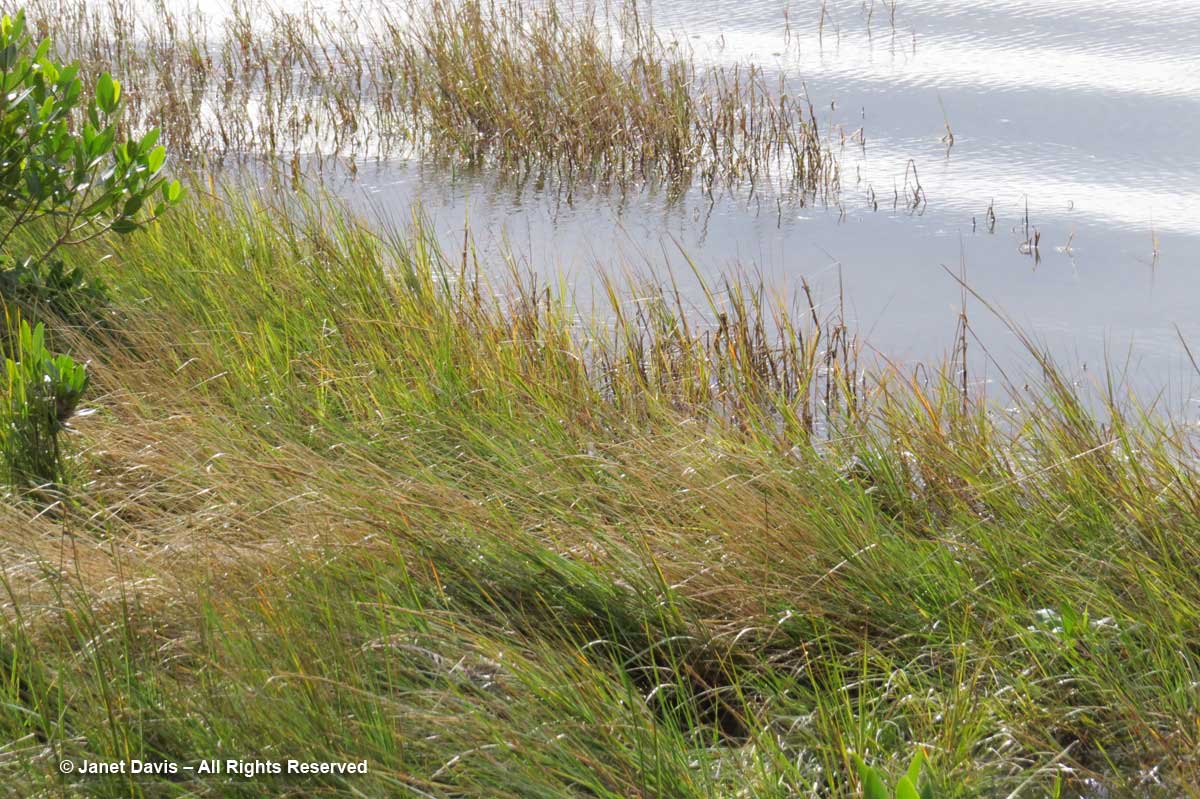
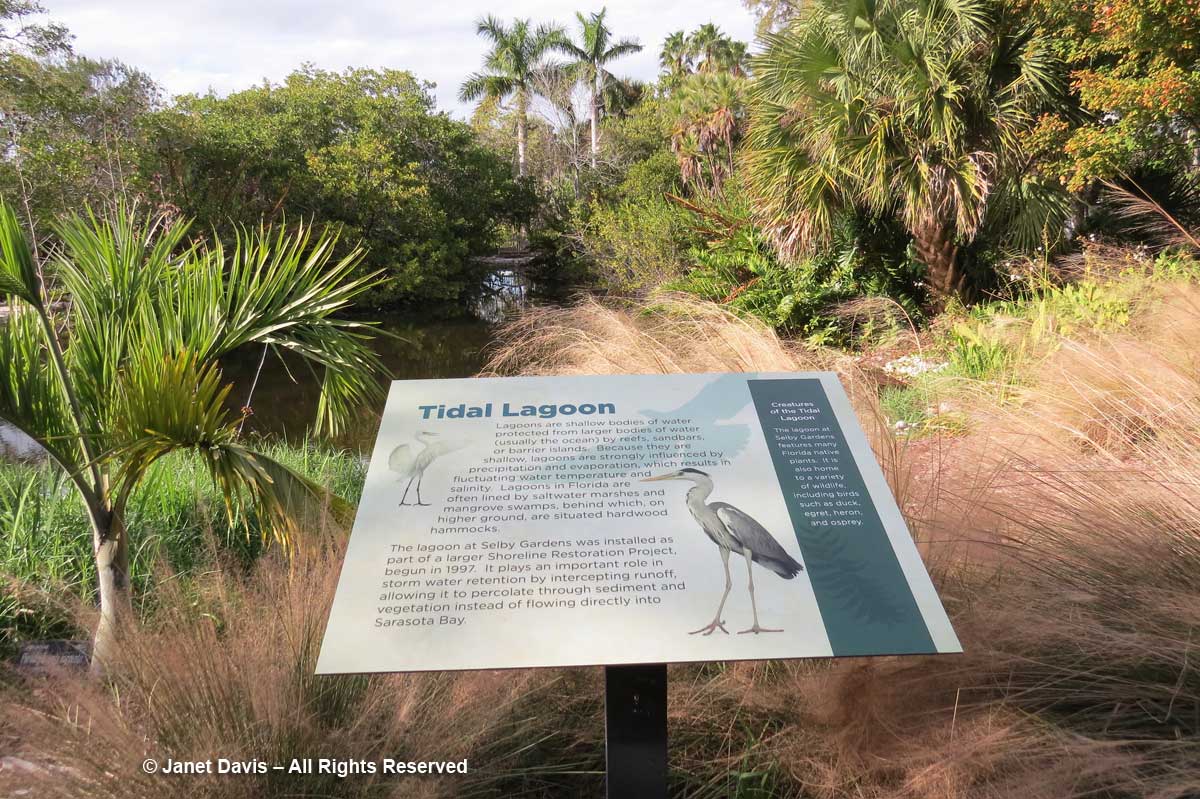
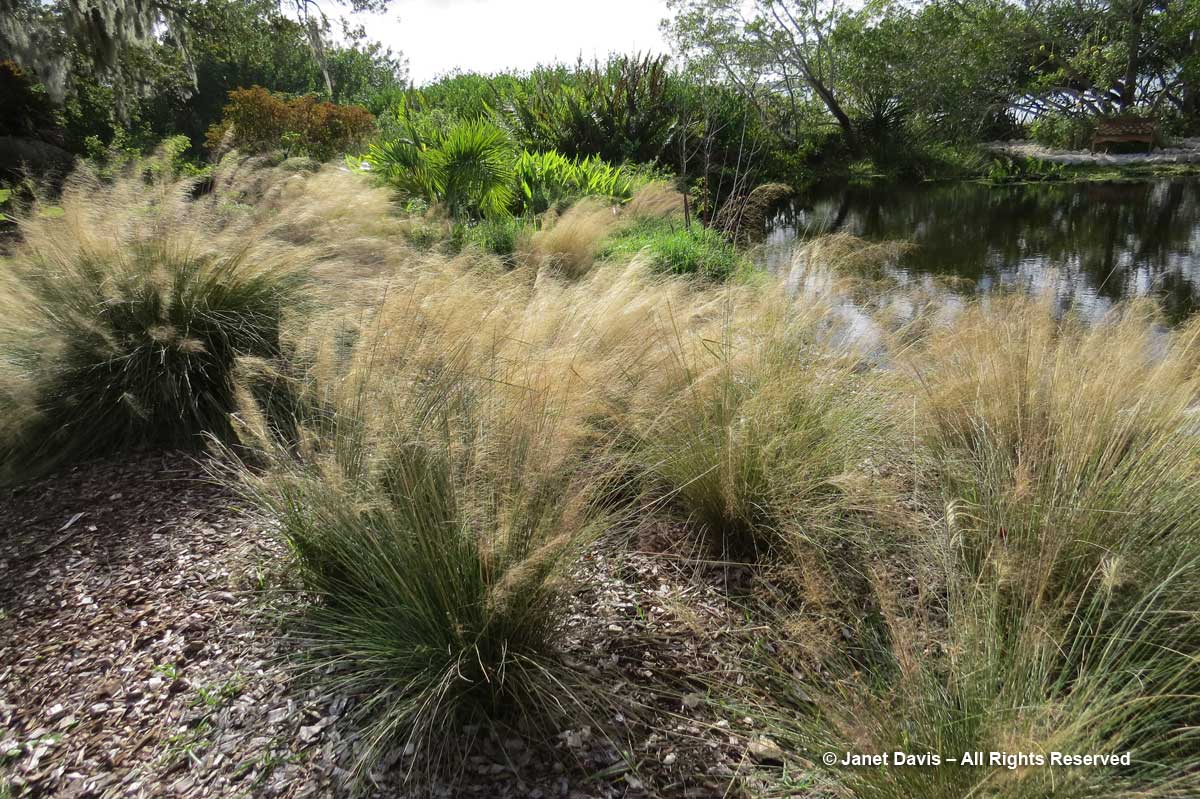
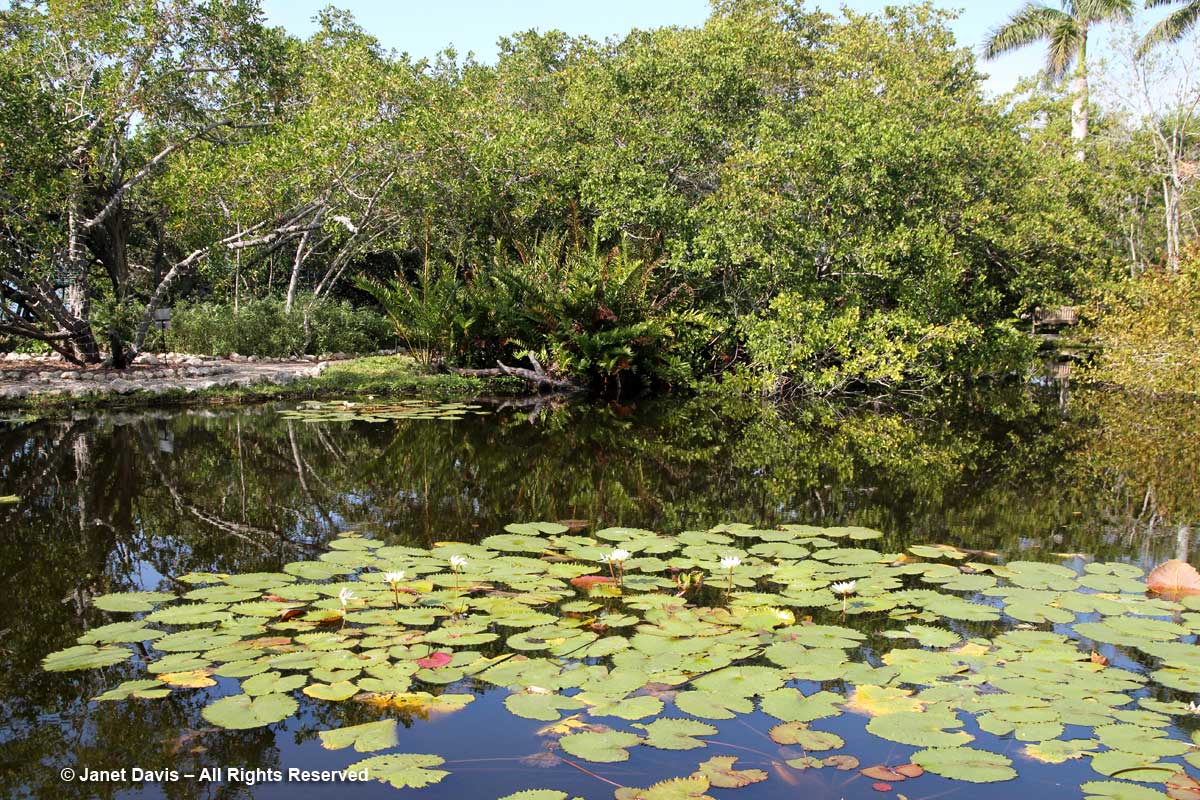
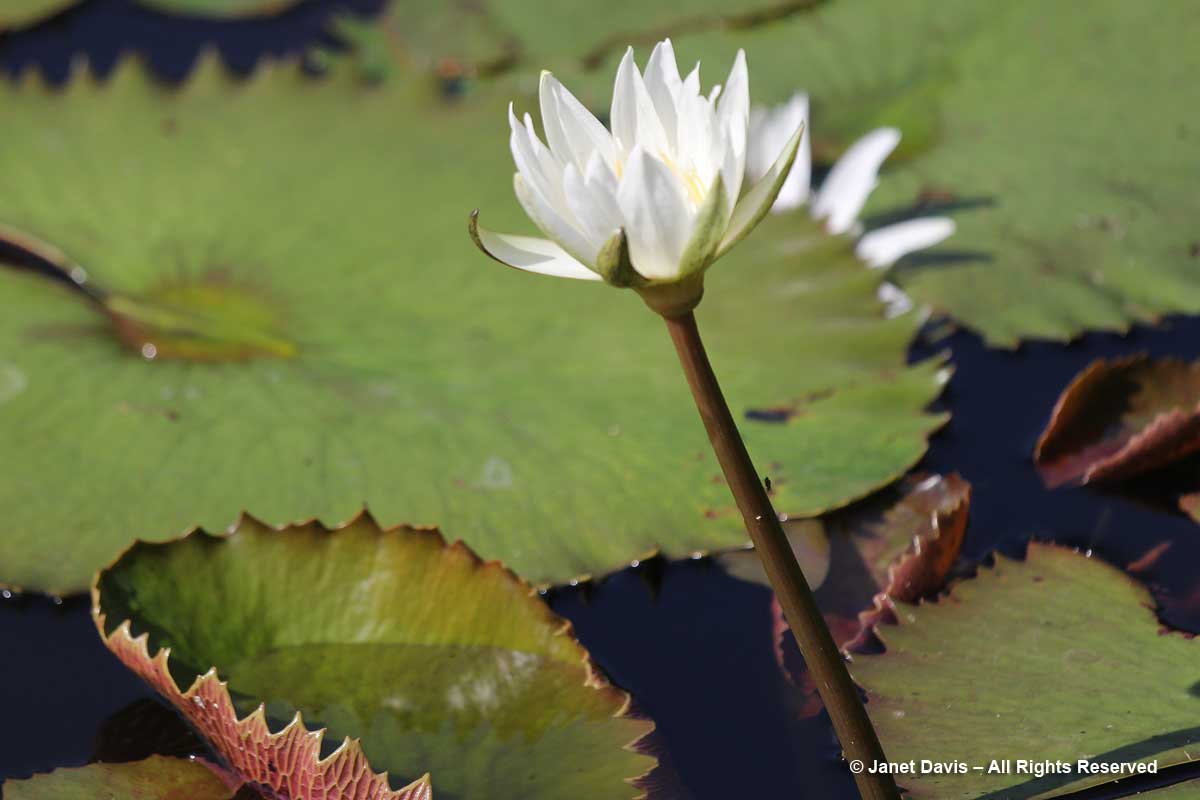
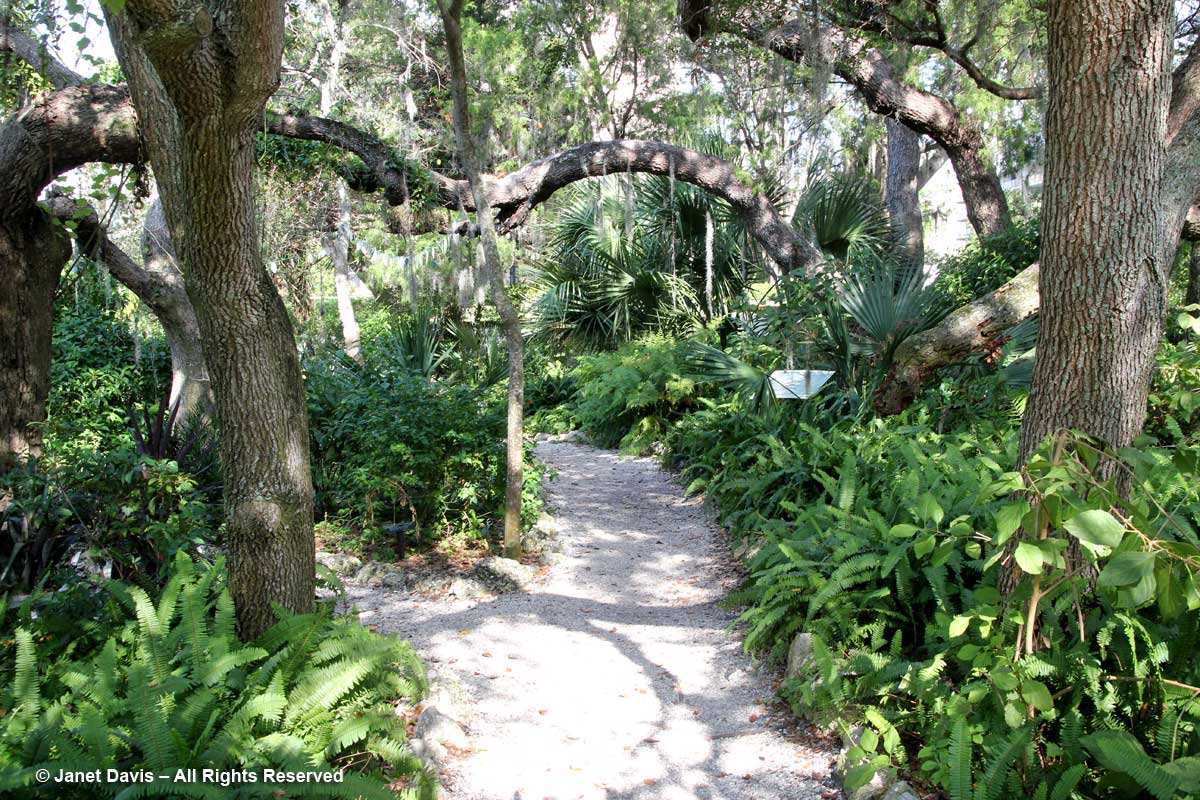
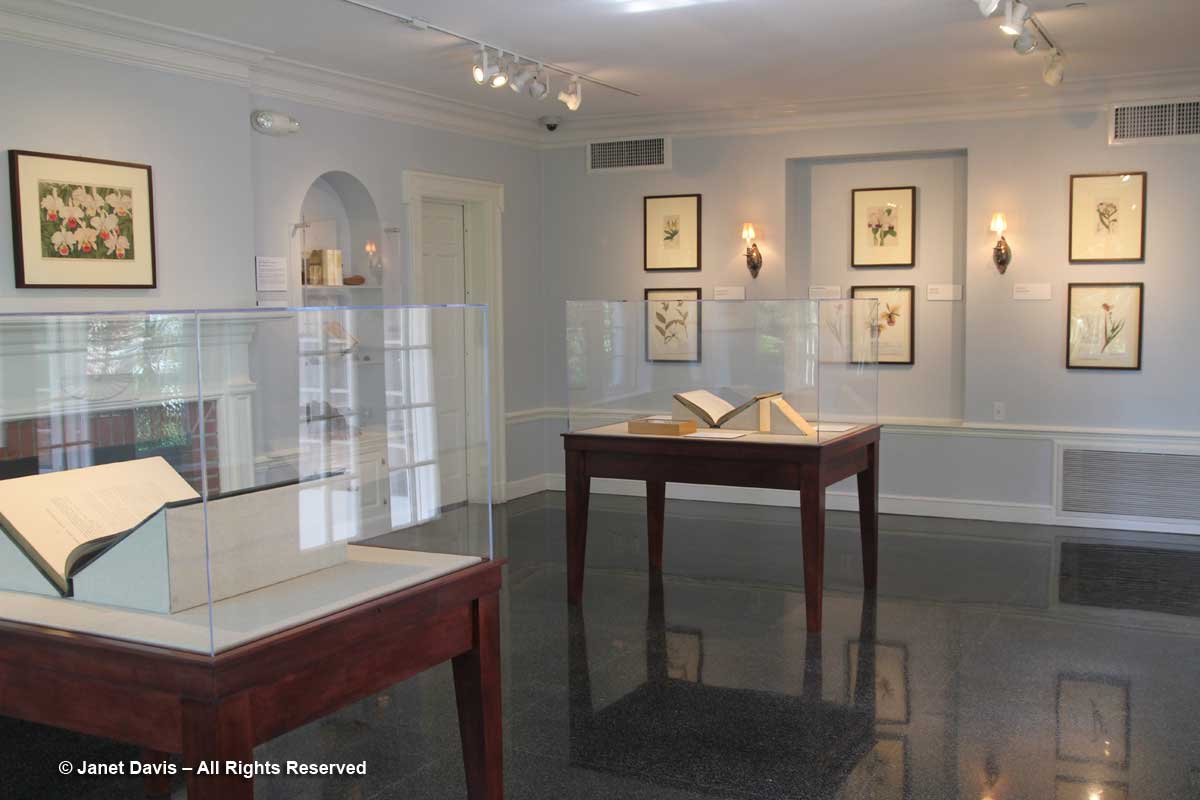
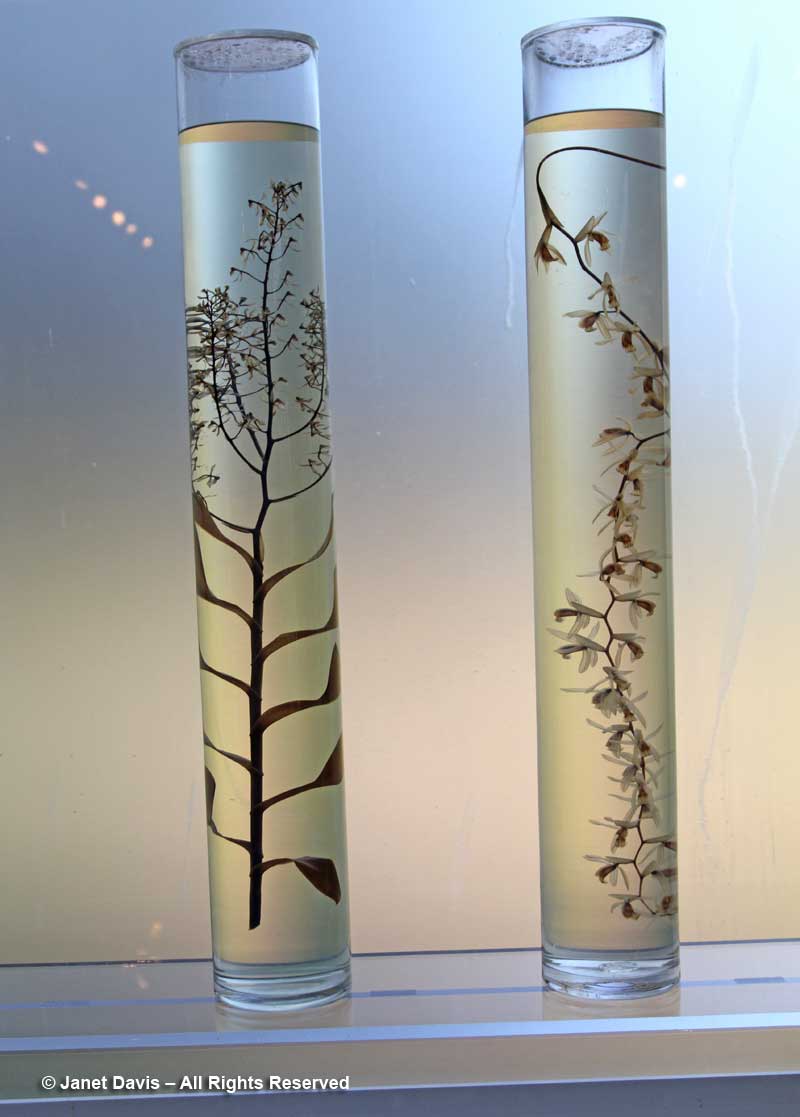
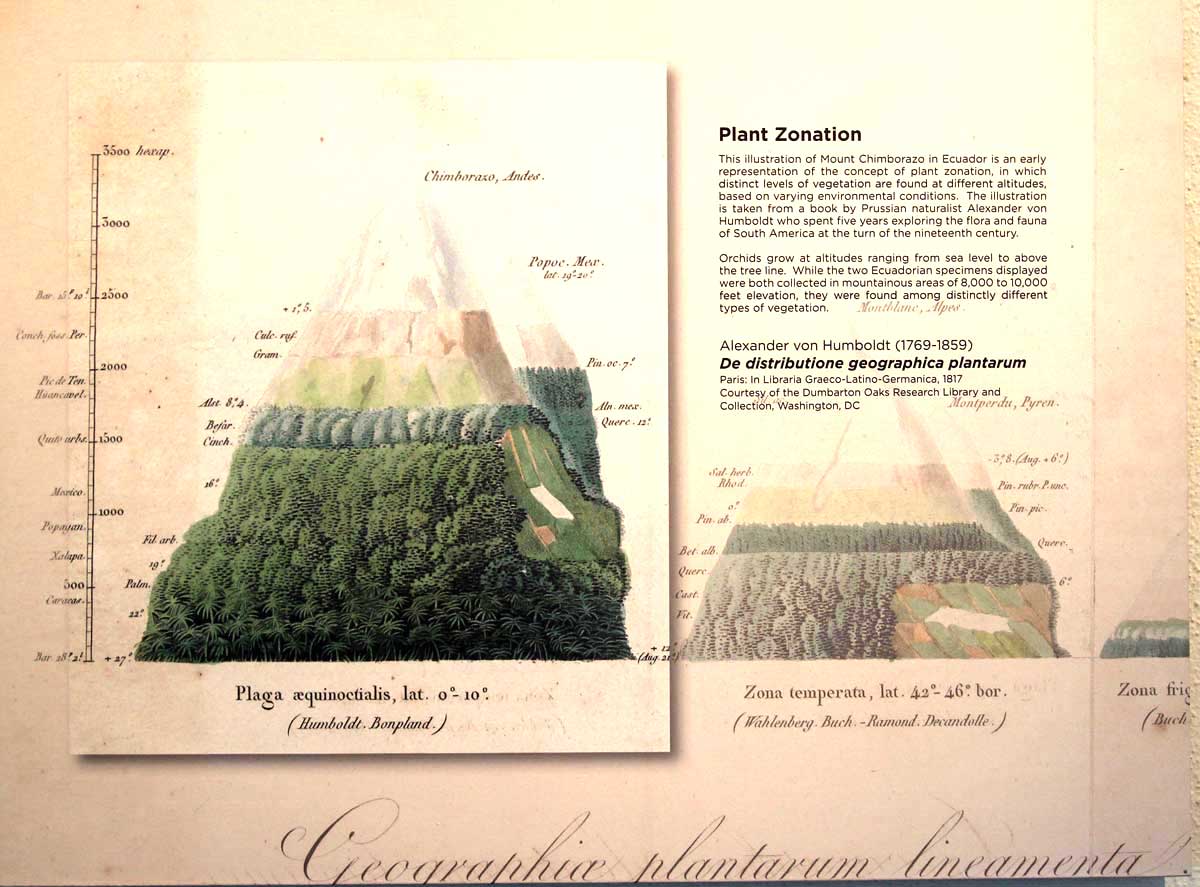
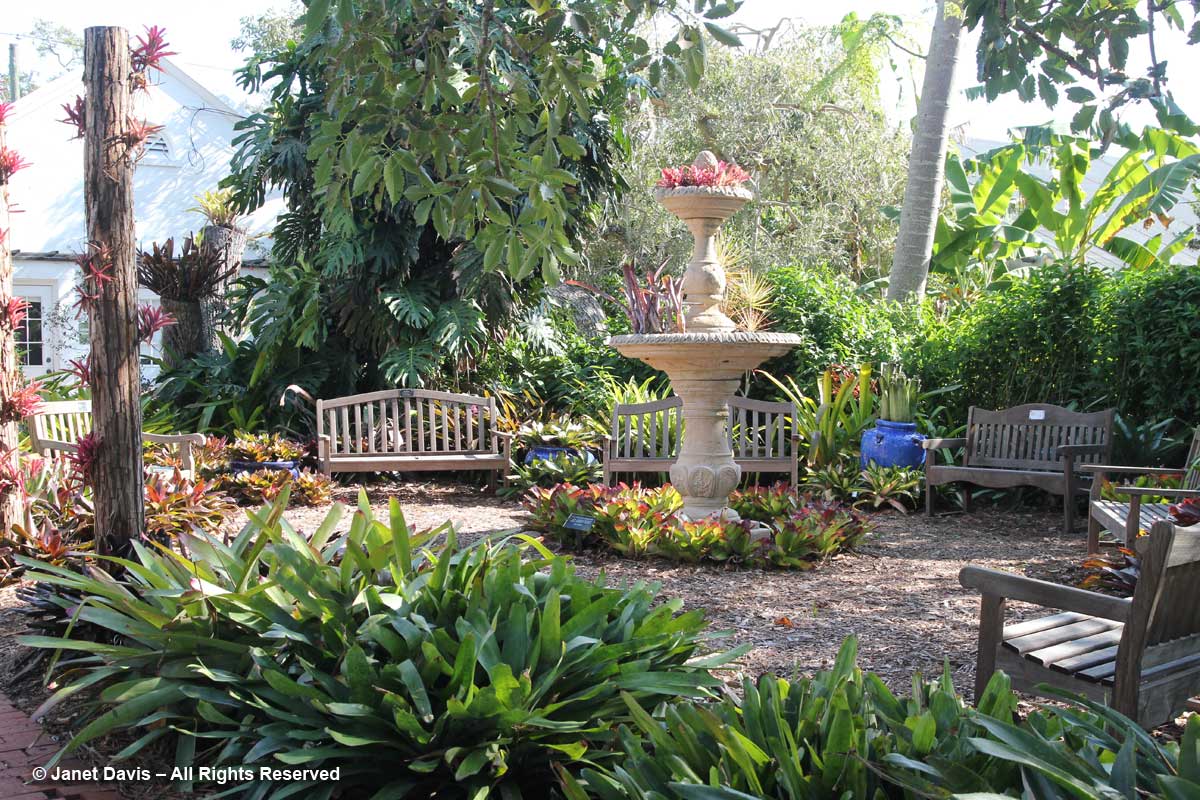
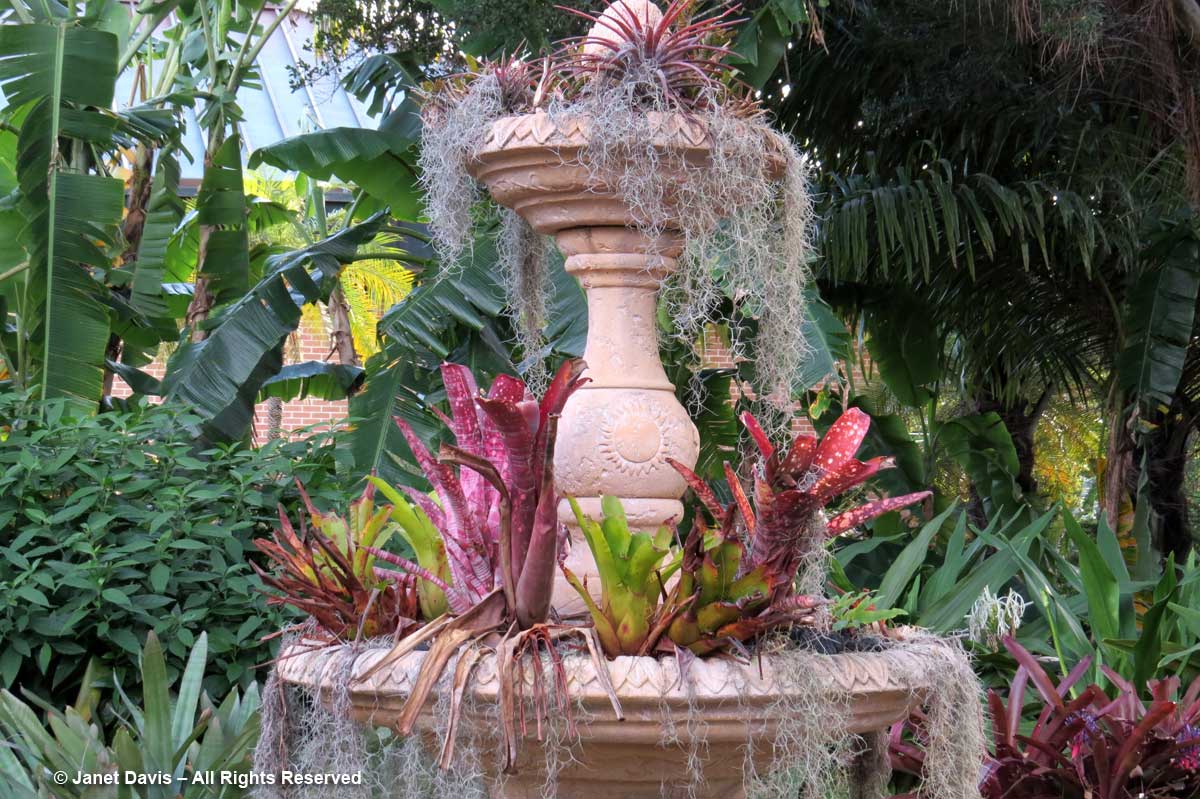
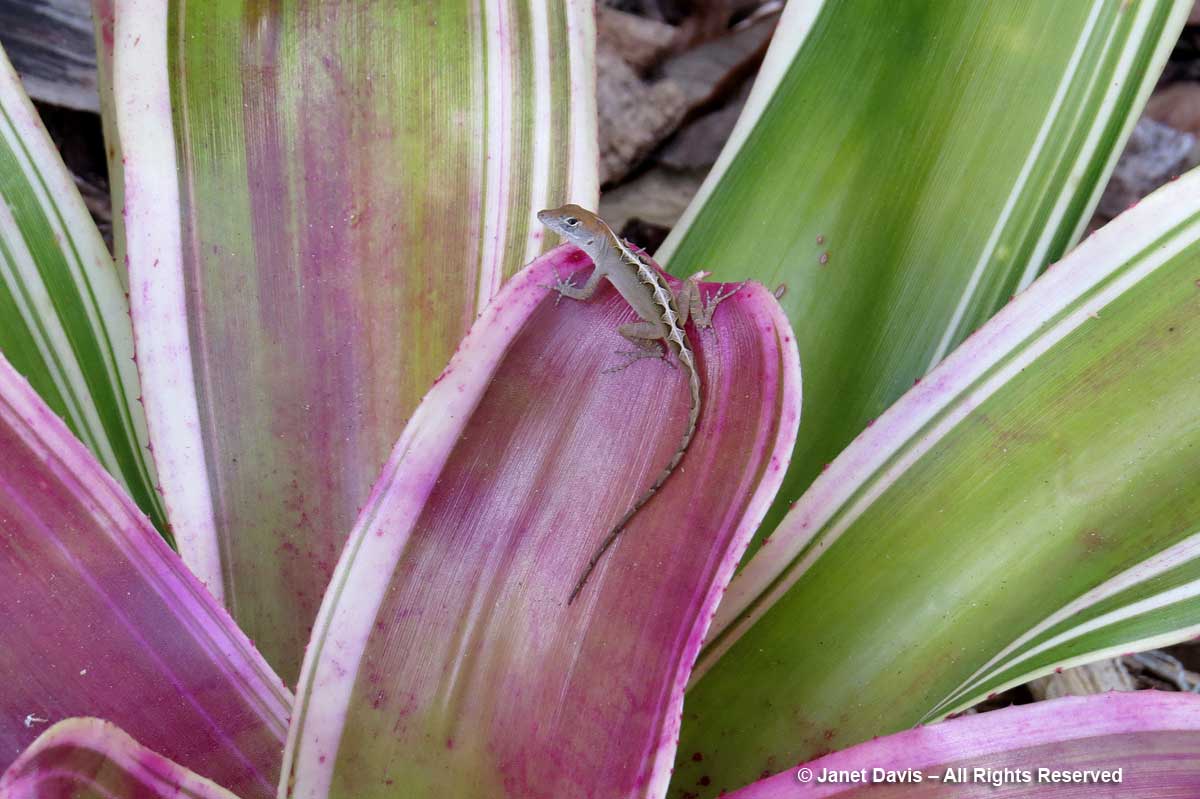
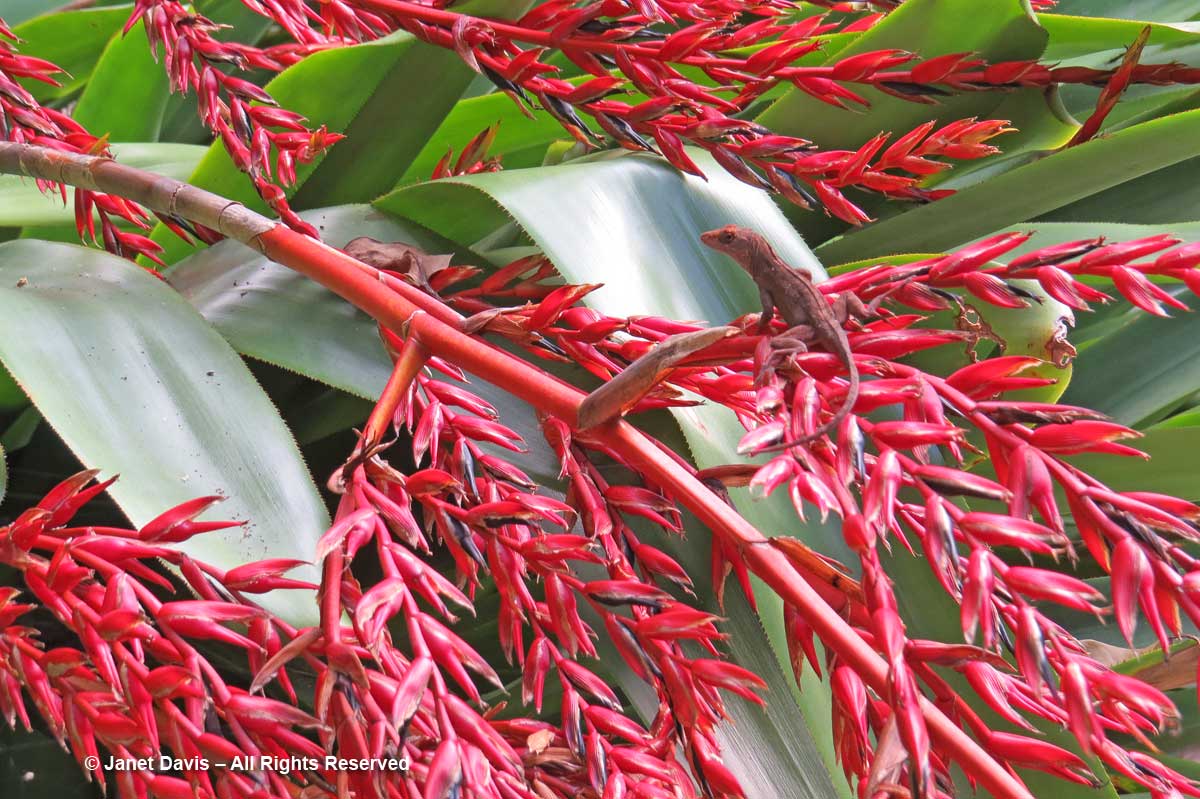
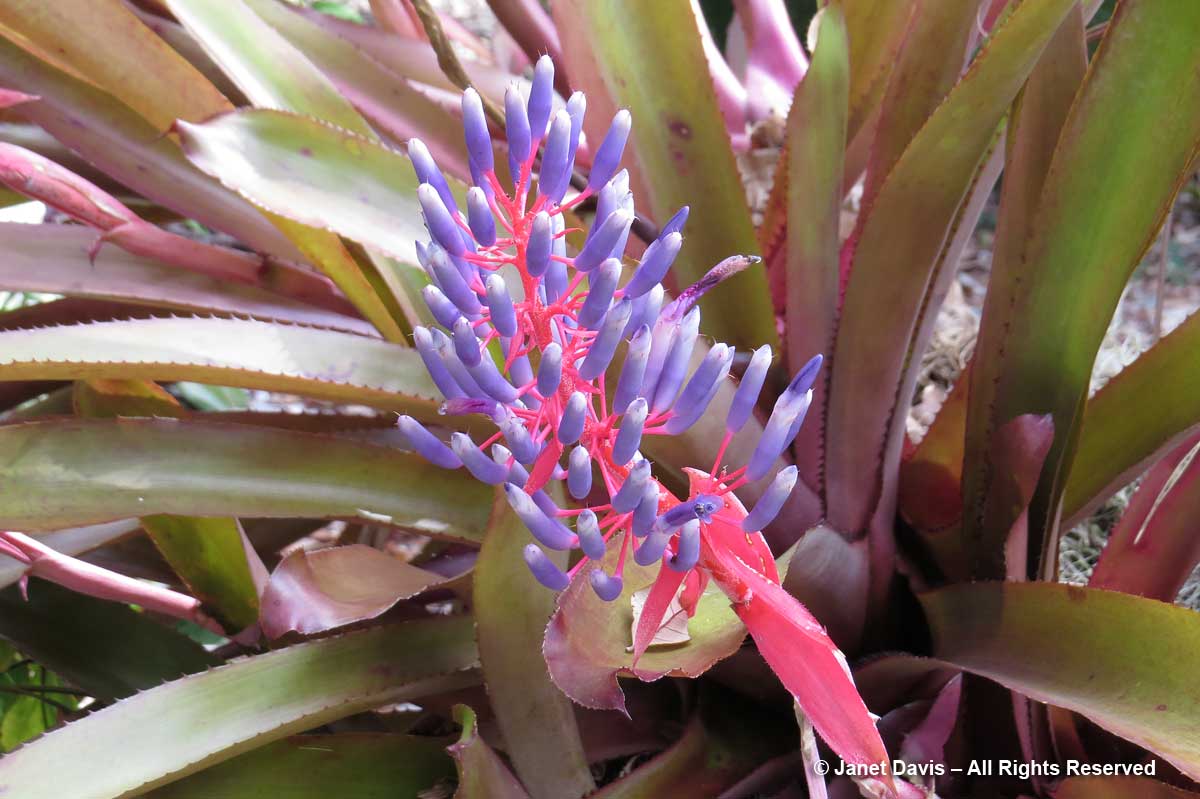
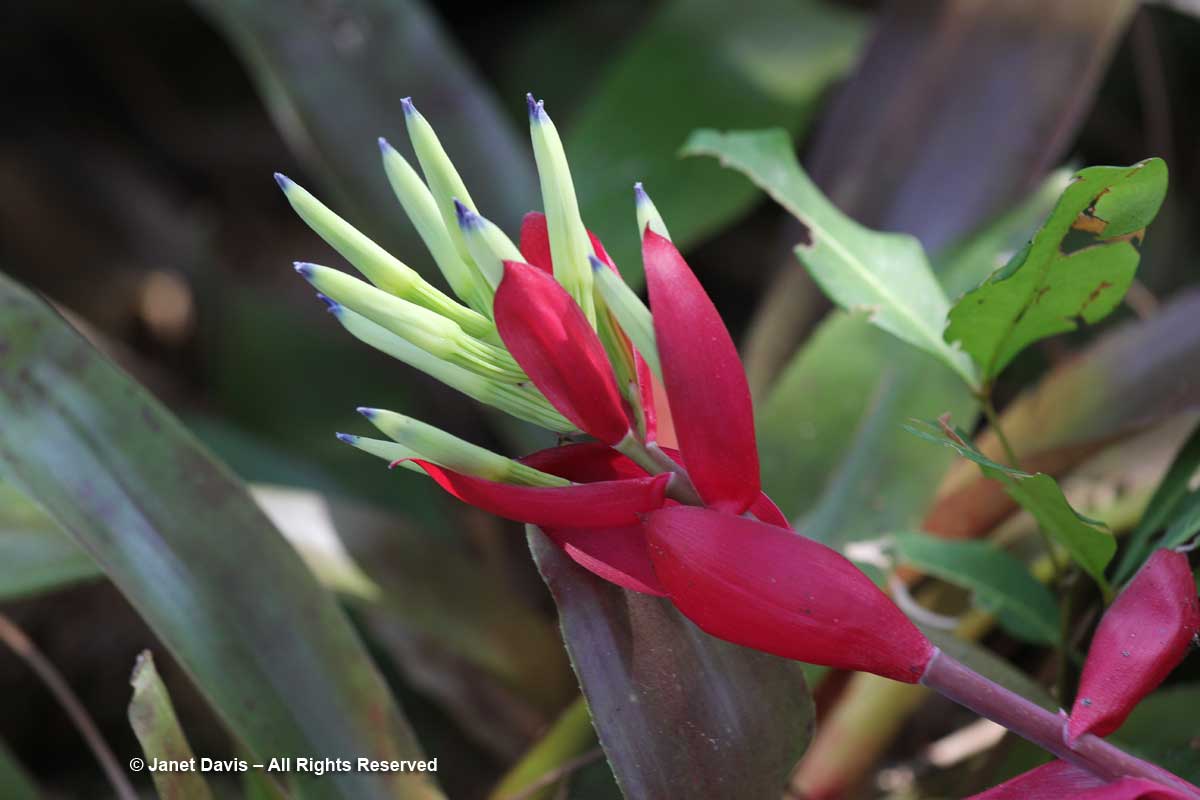
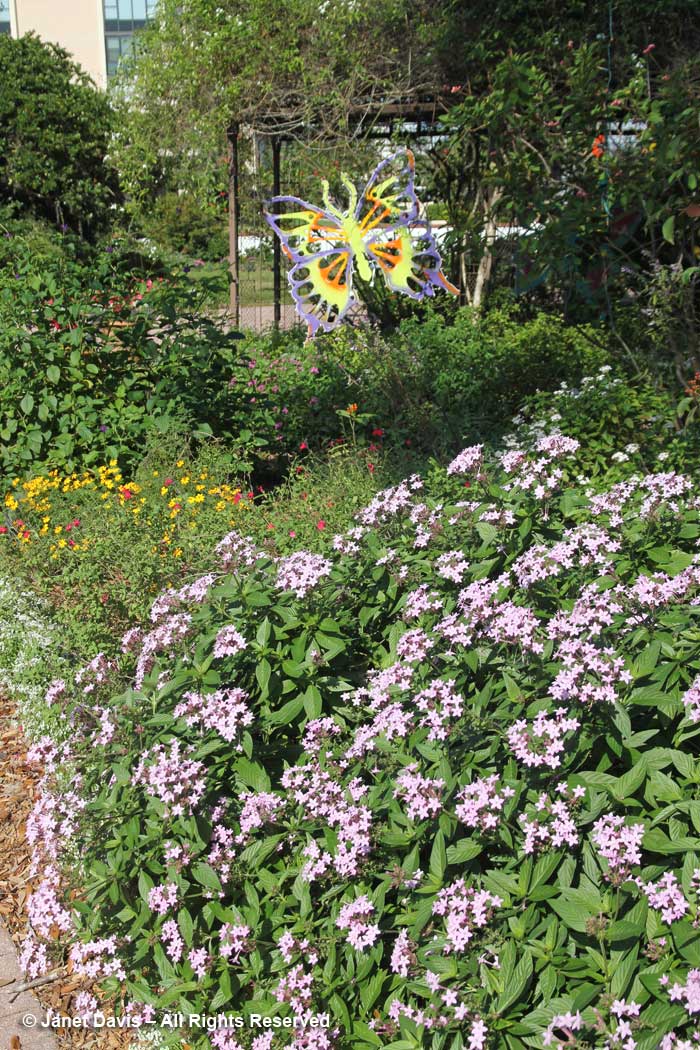
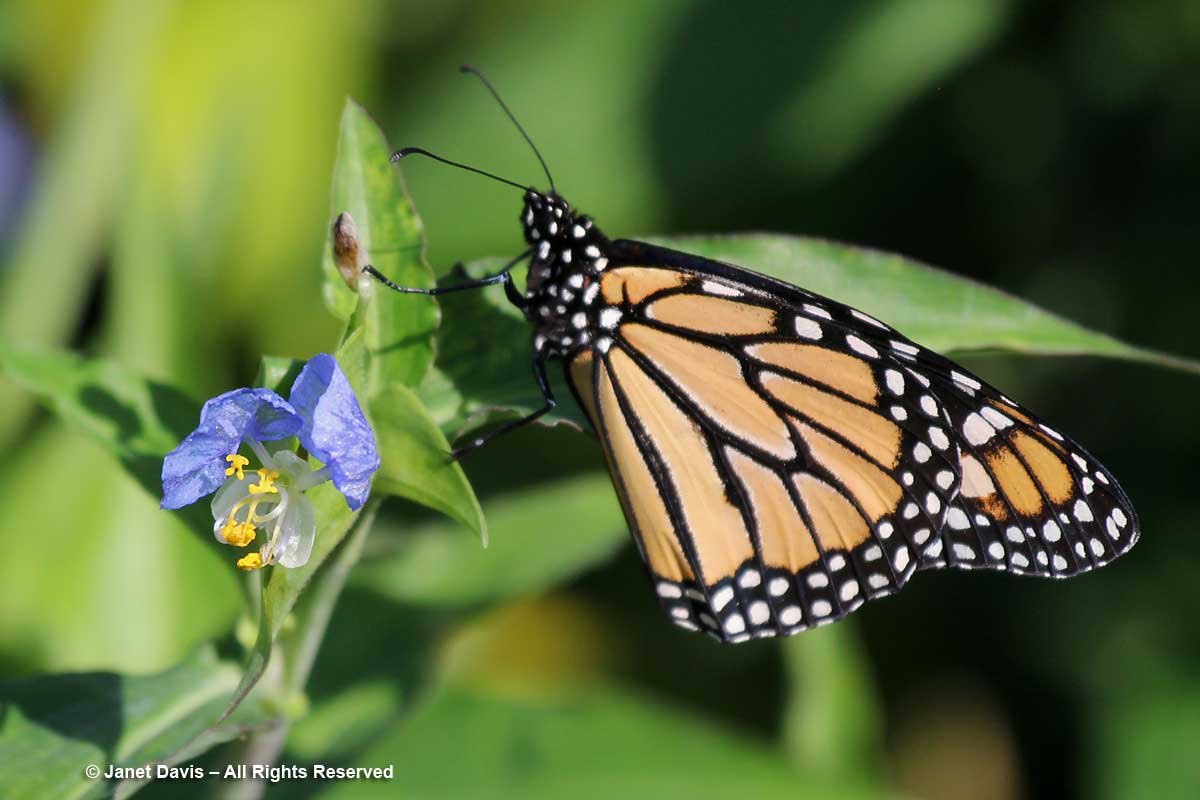
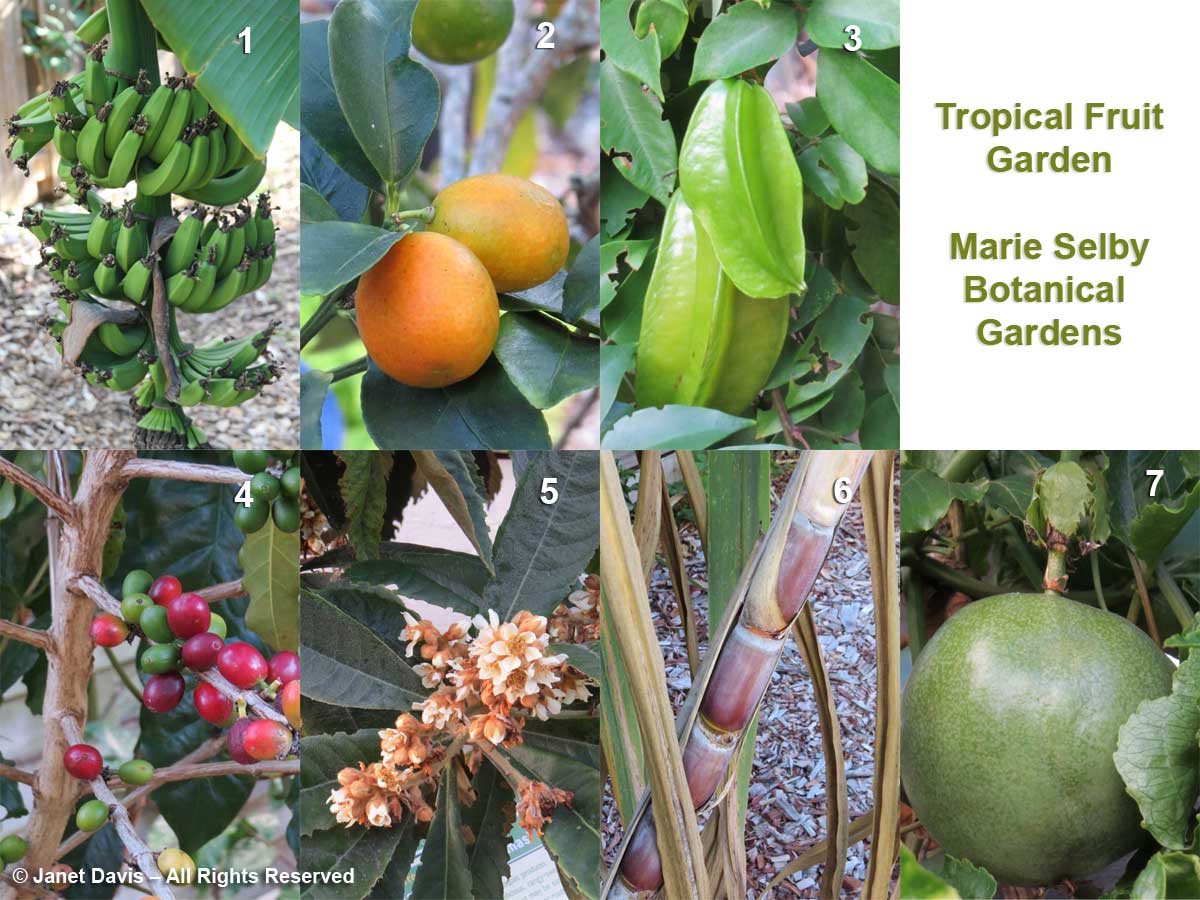
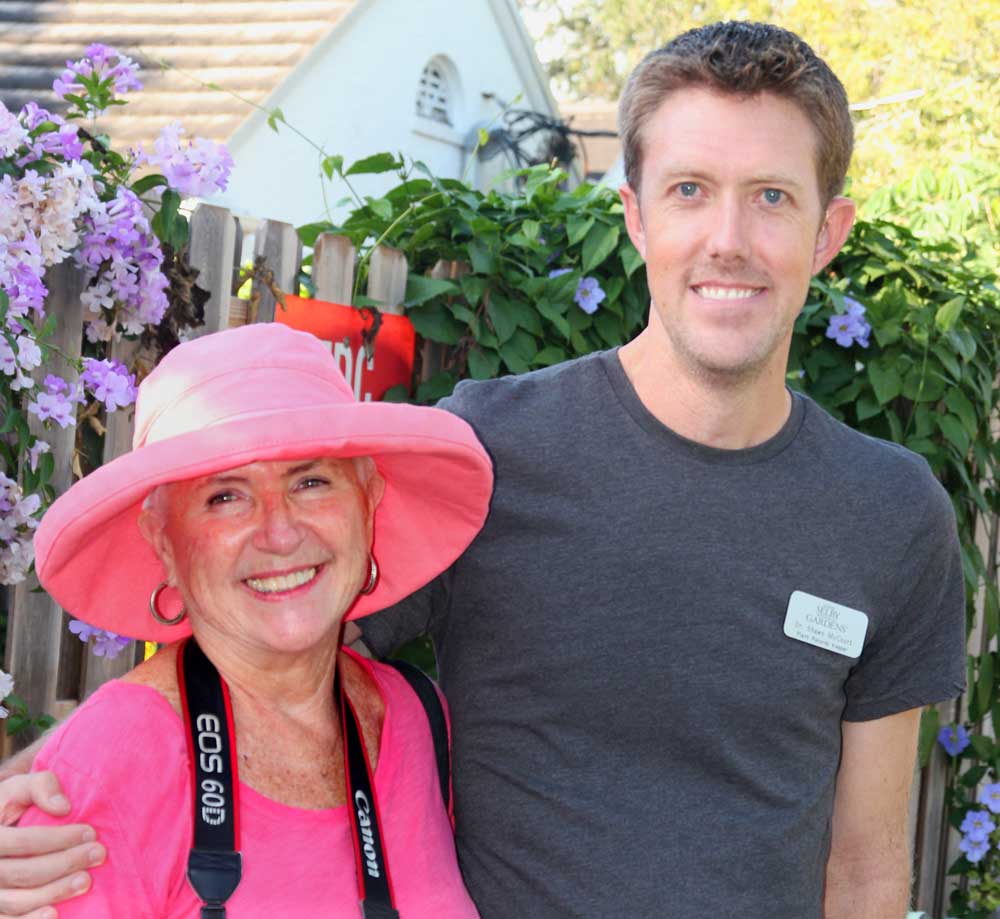
Thanks for the tour, Janet. I hadn’t known about this garden, but it is now on my wadar (wishlist radar). Happy Christmas to you and your family!
Thanks, Helen. It’s a worthy destination!And Happy Christmas to you and yours!